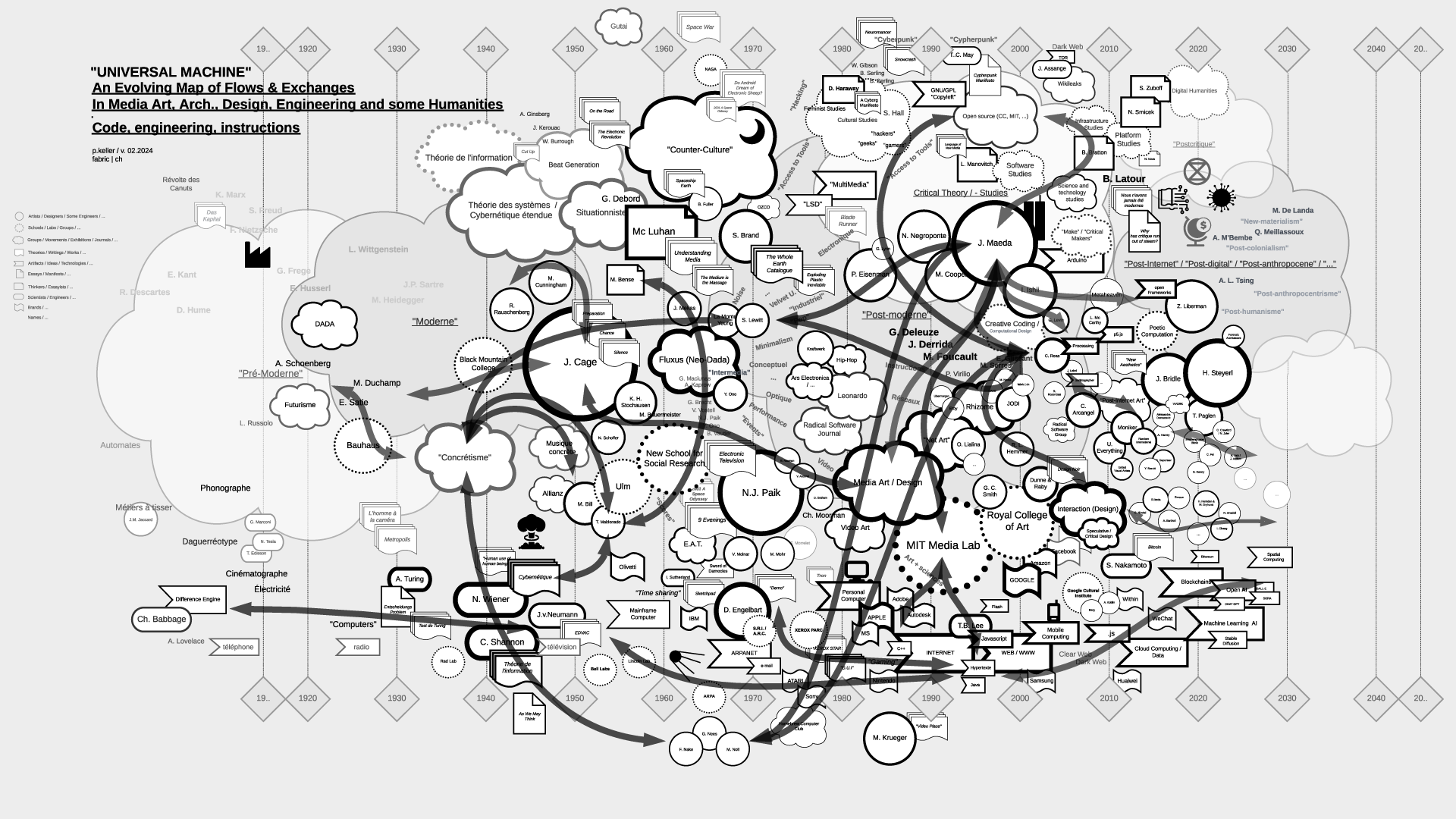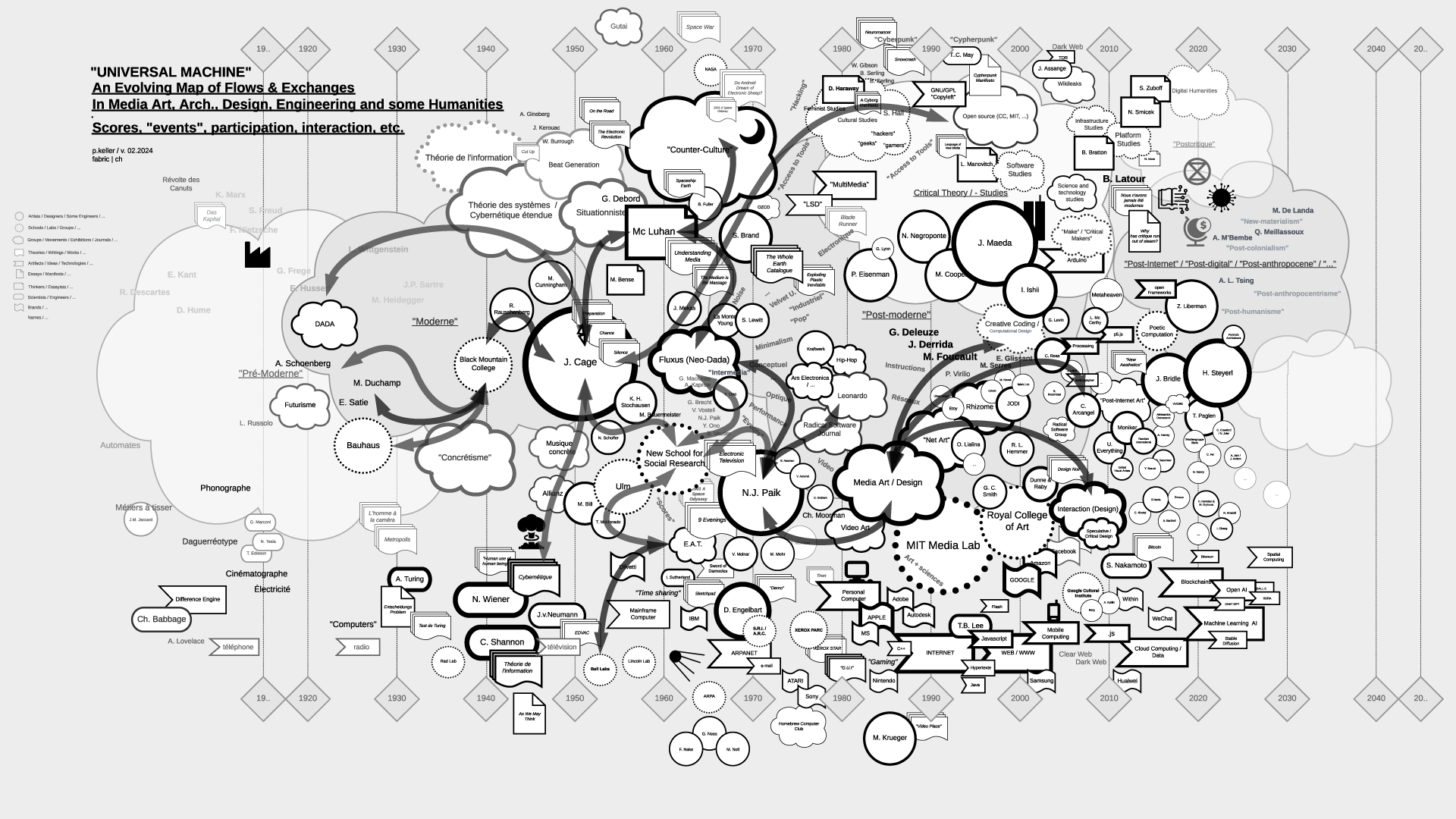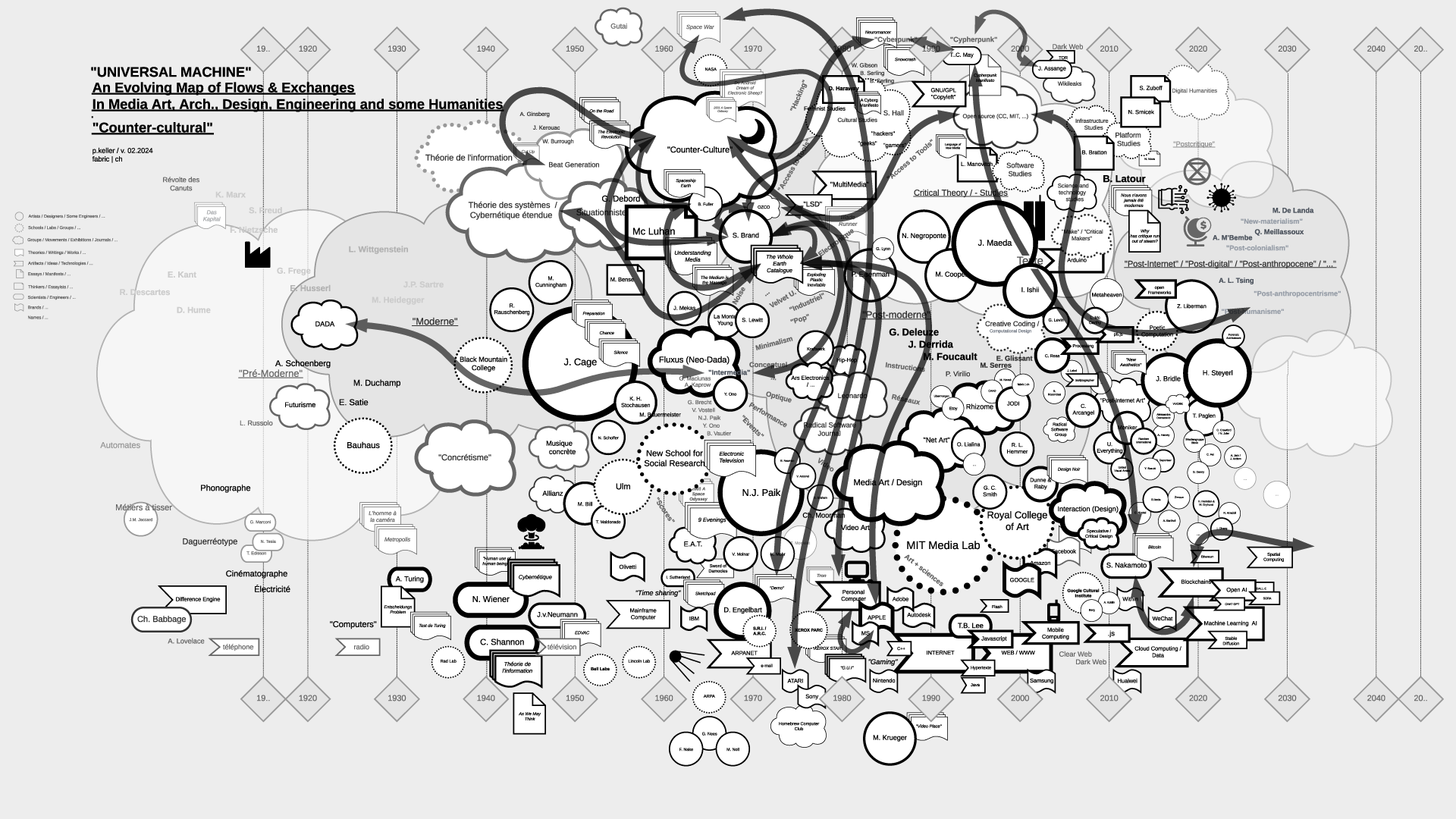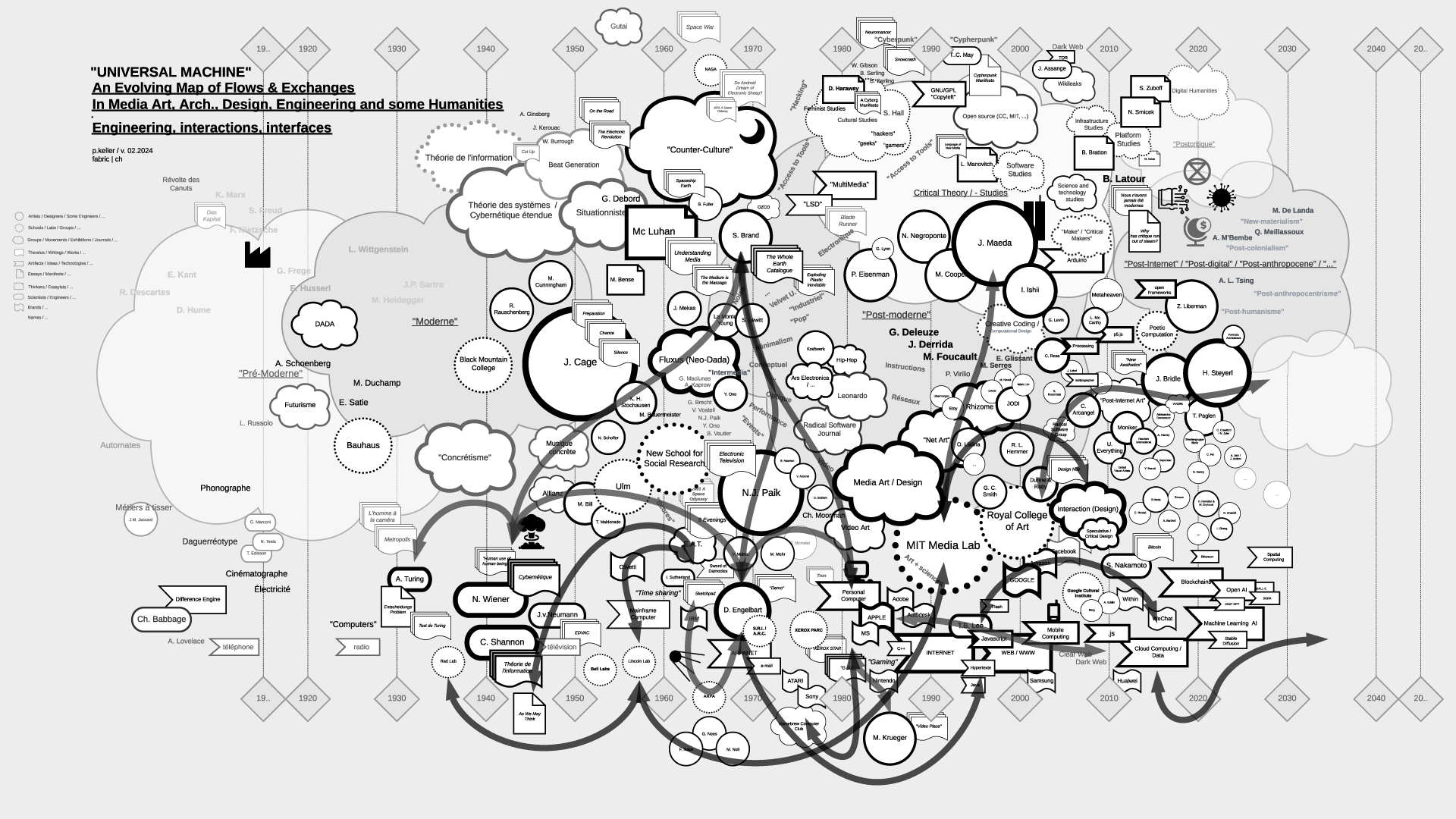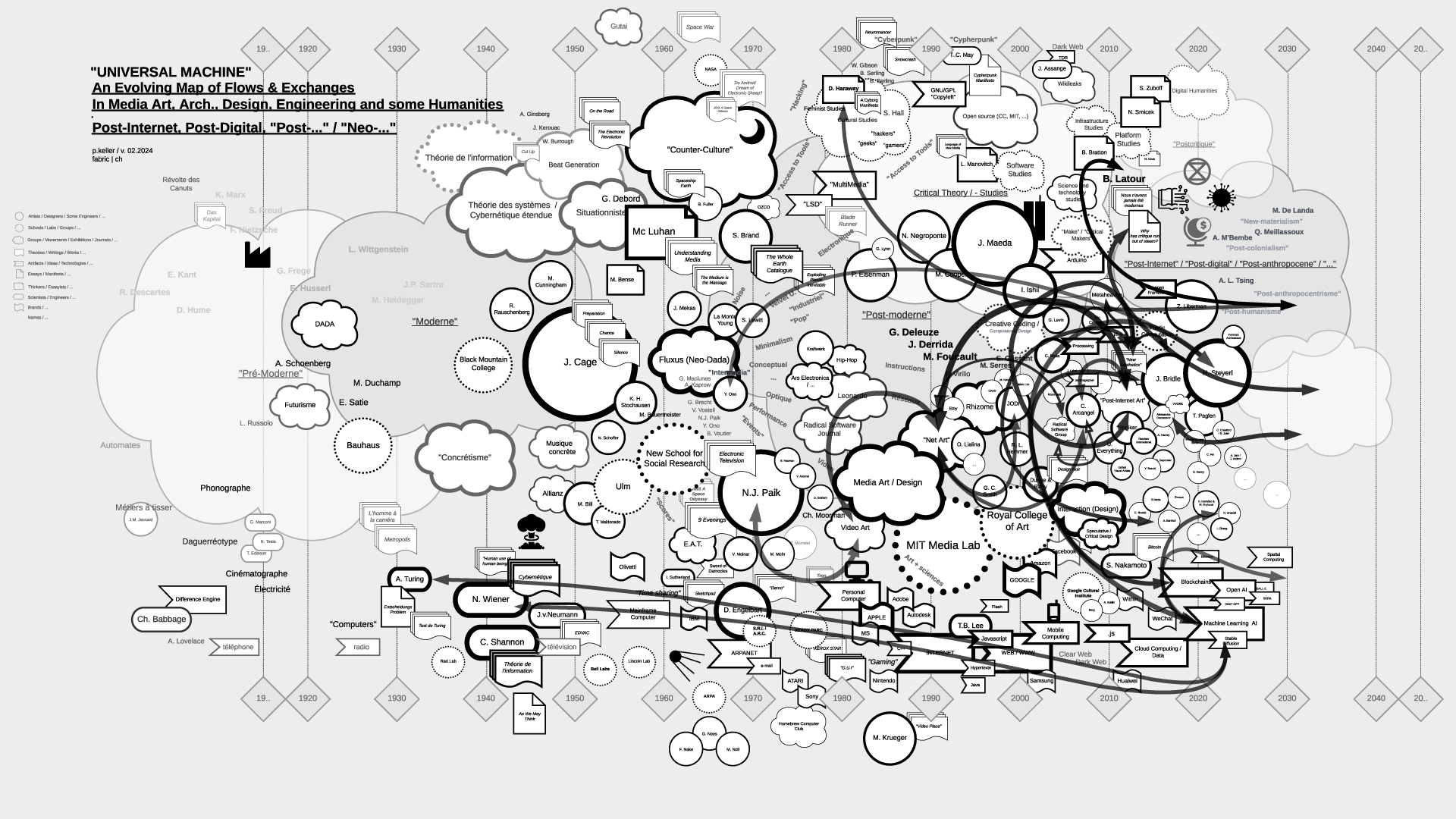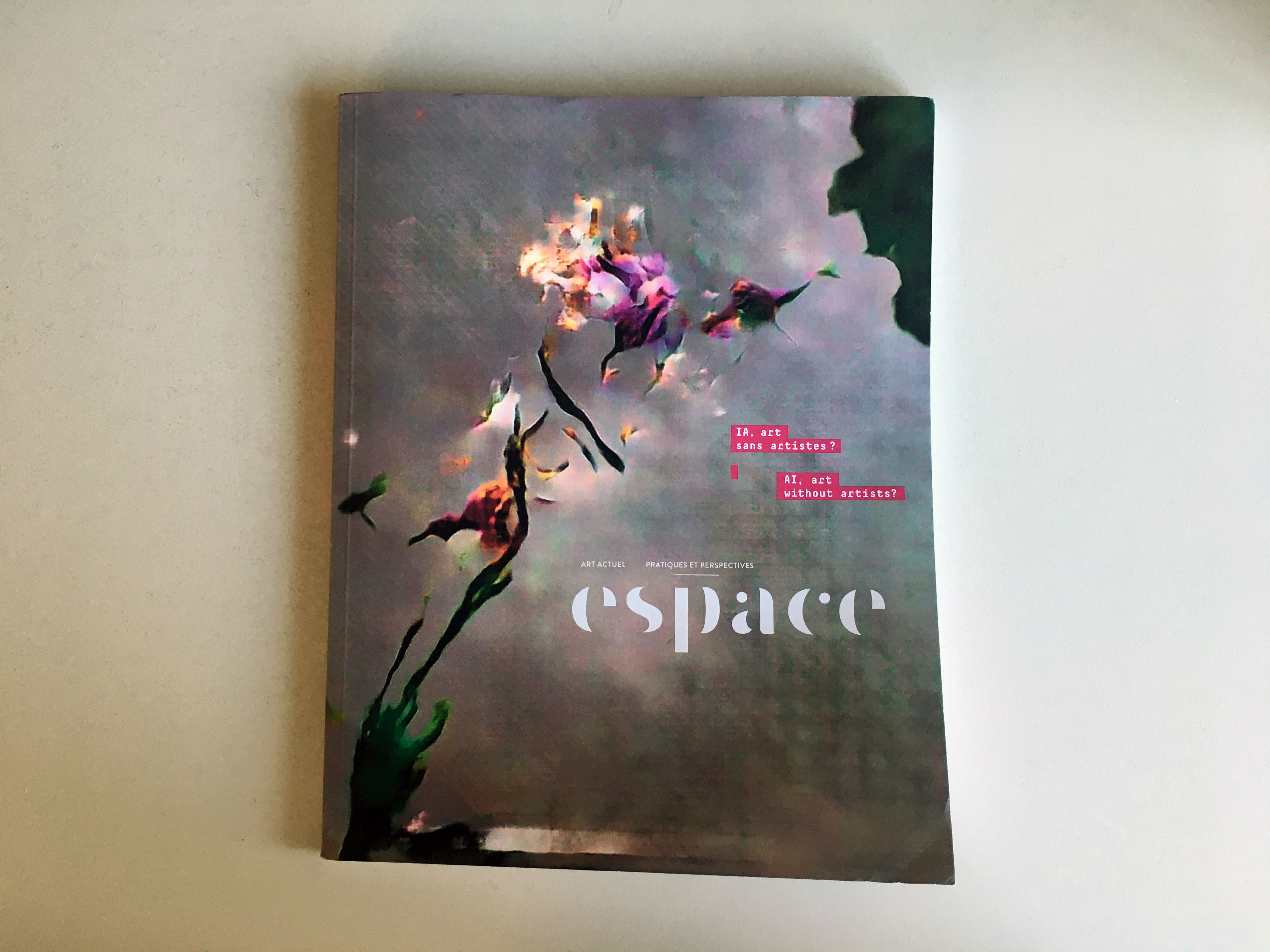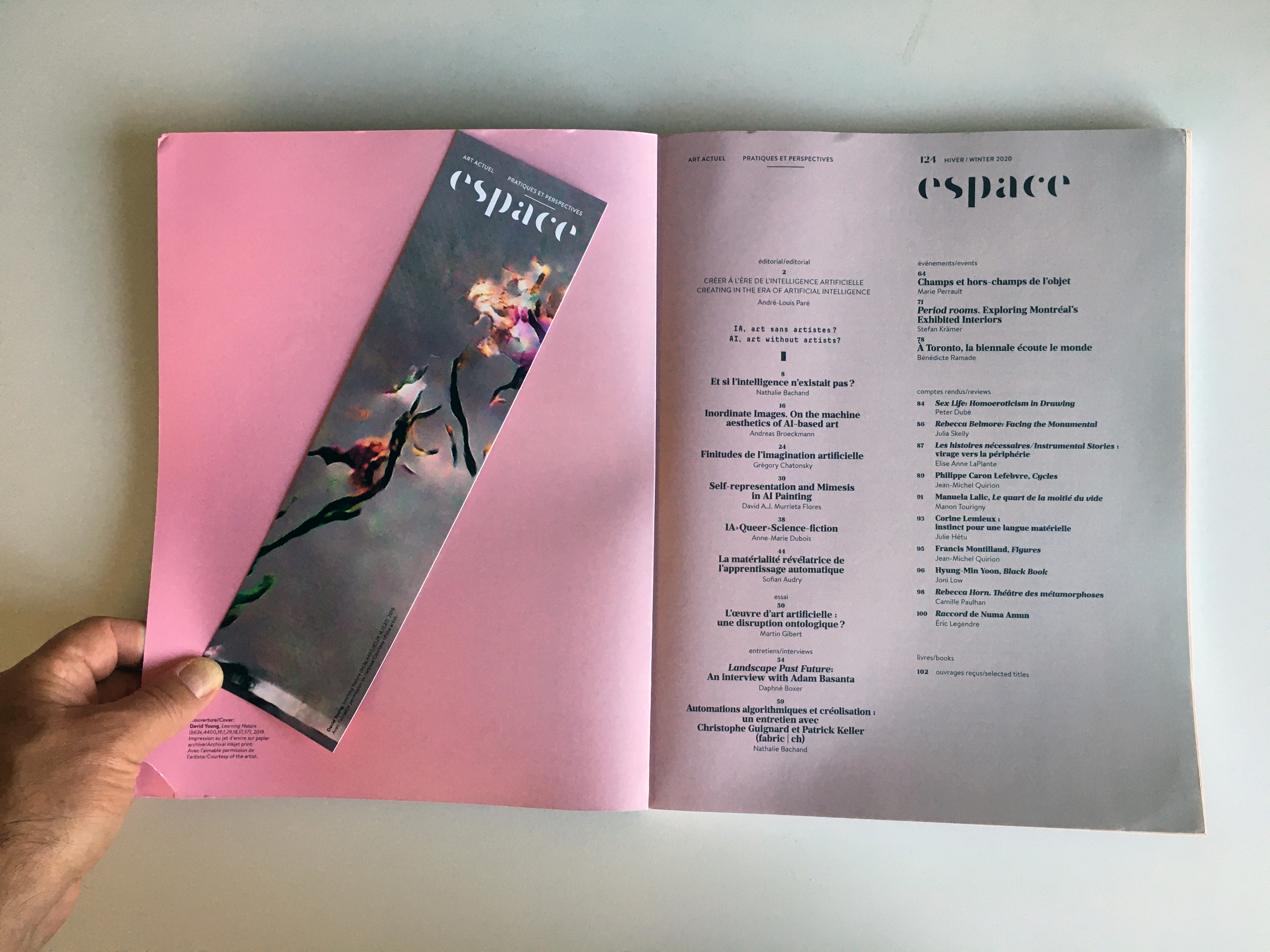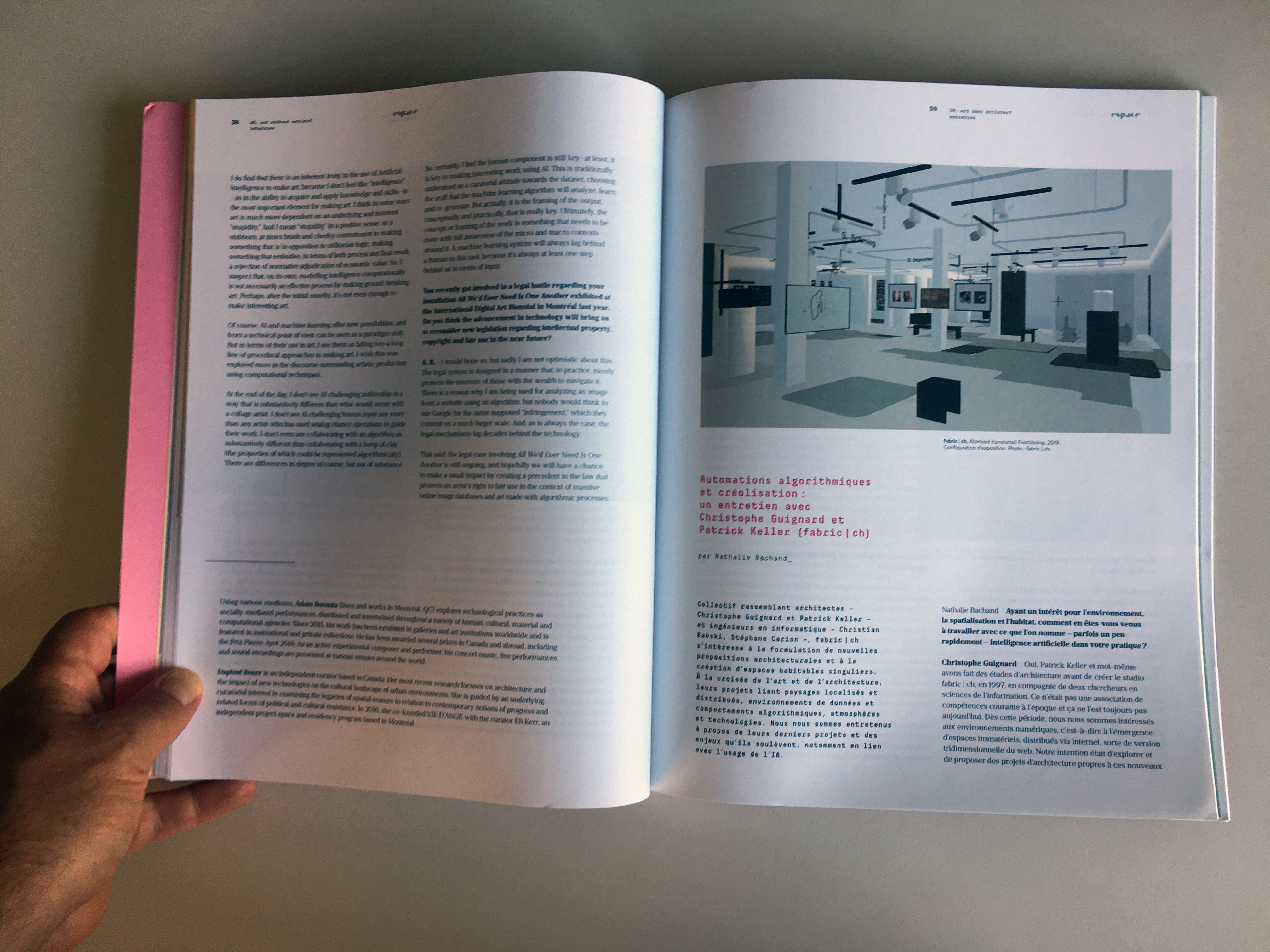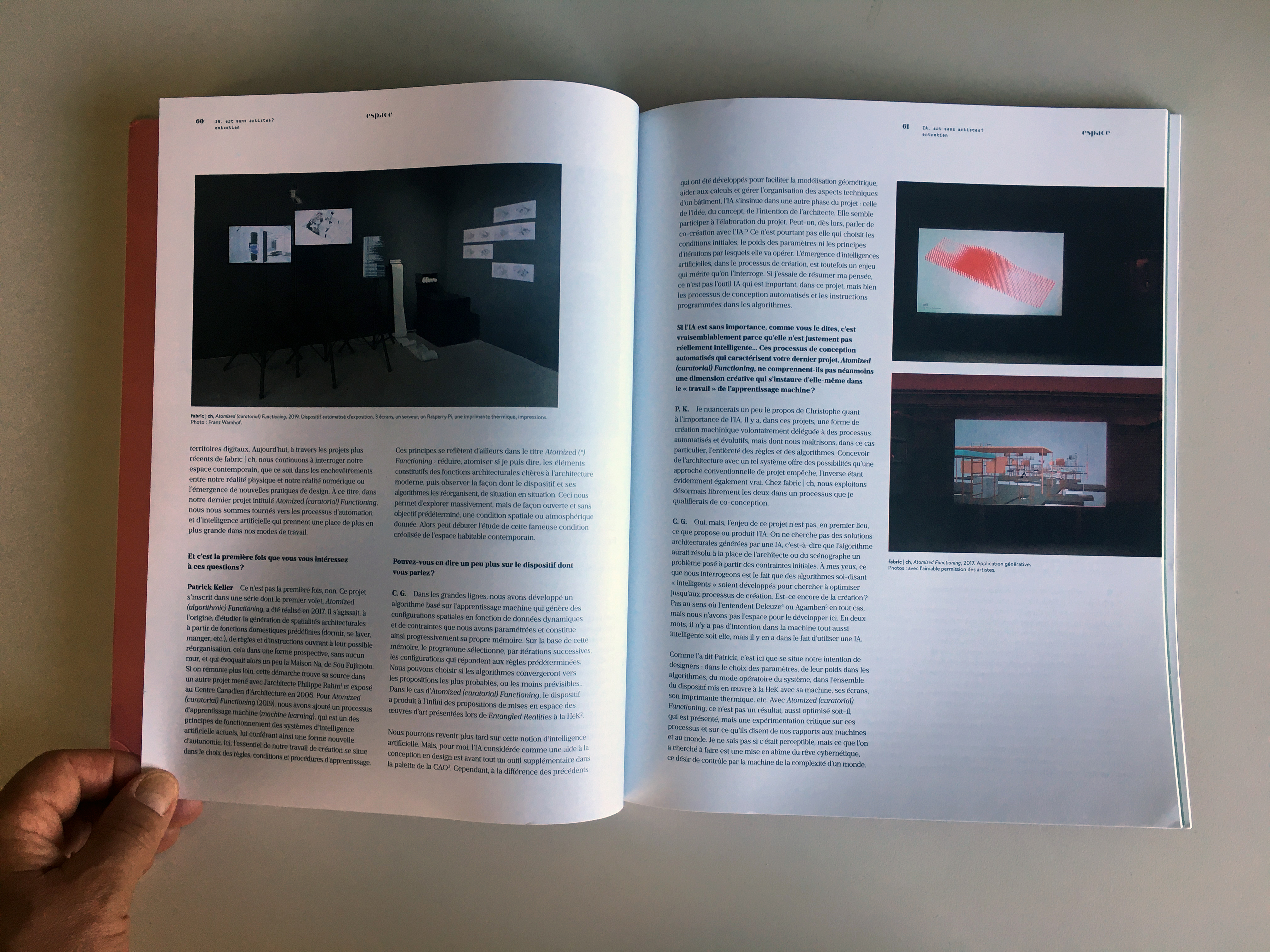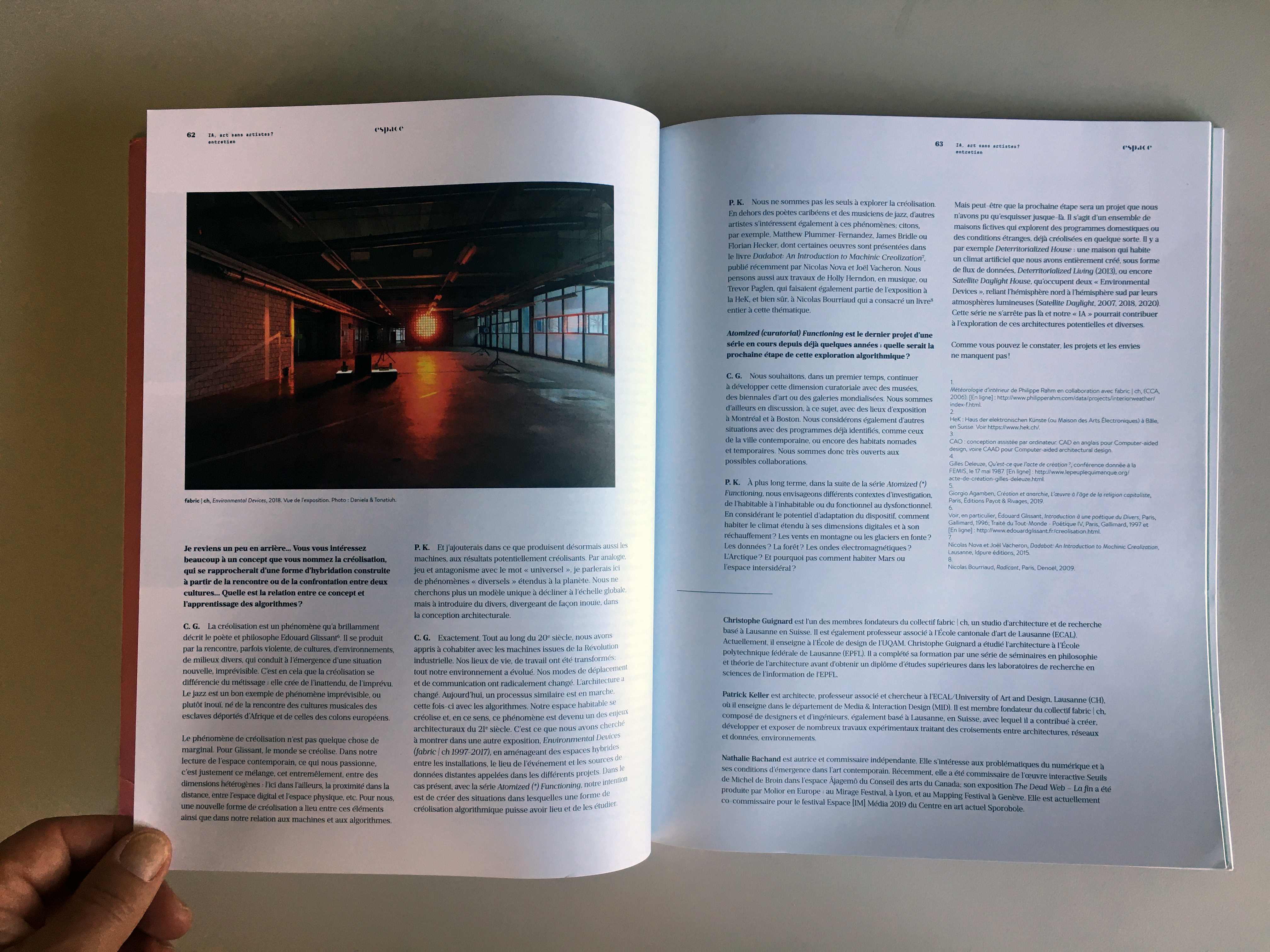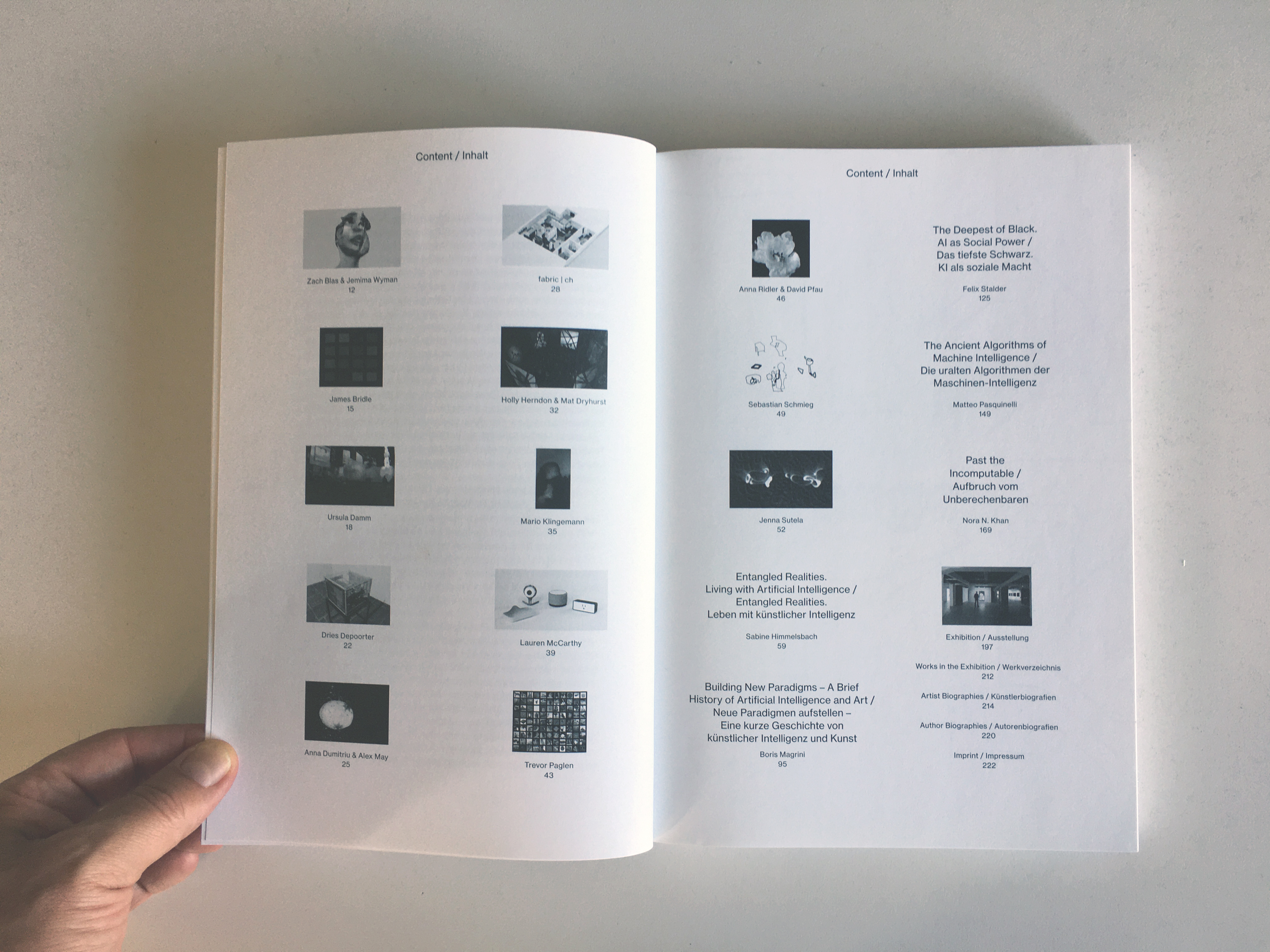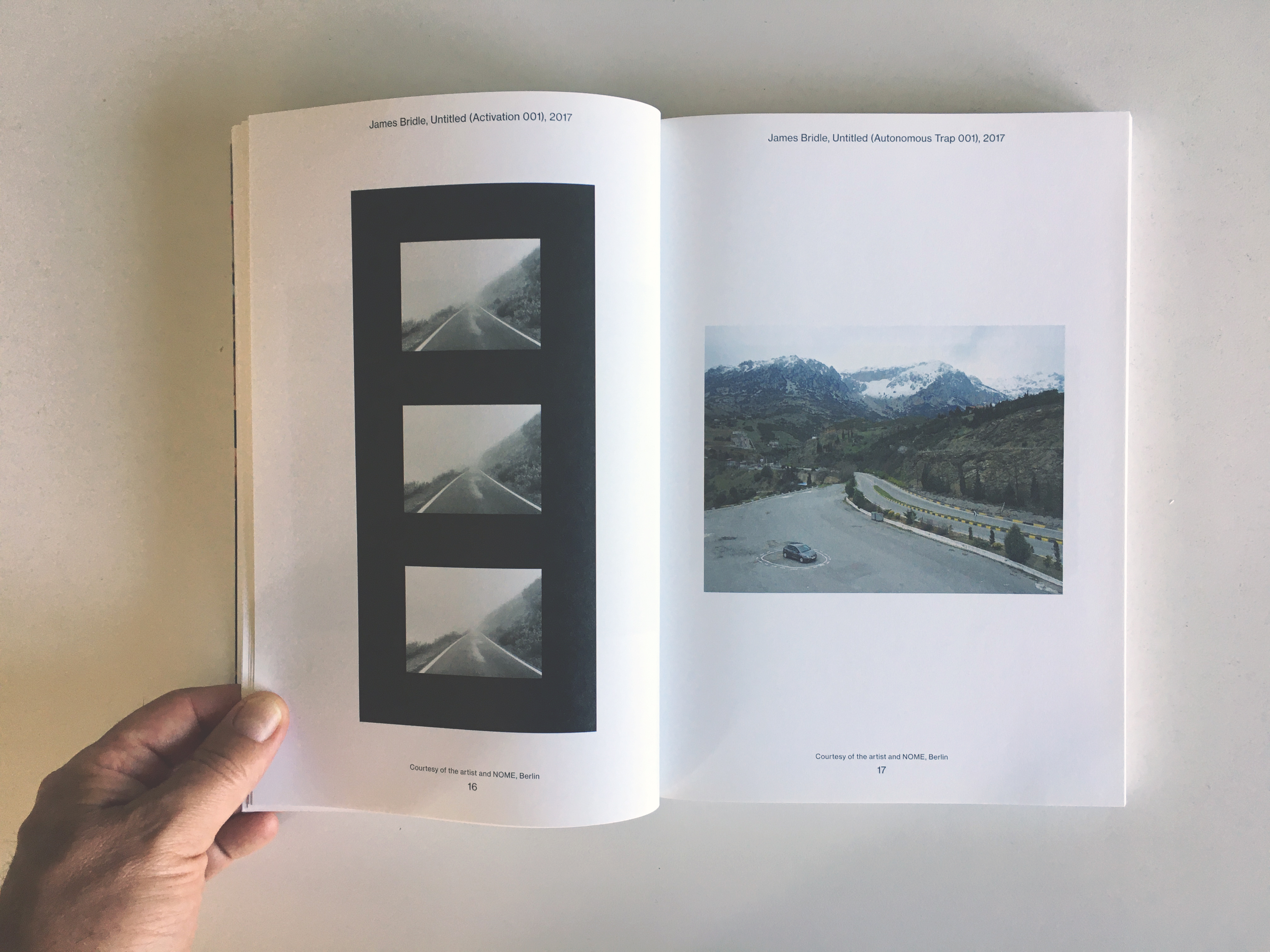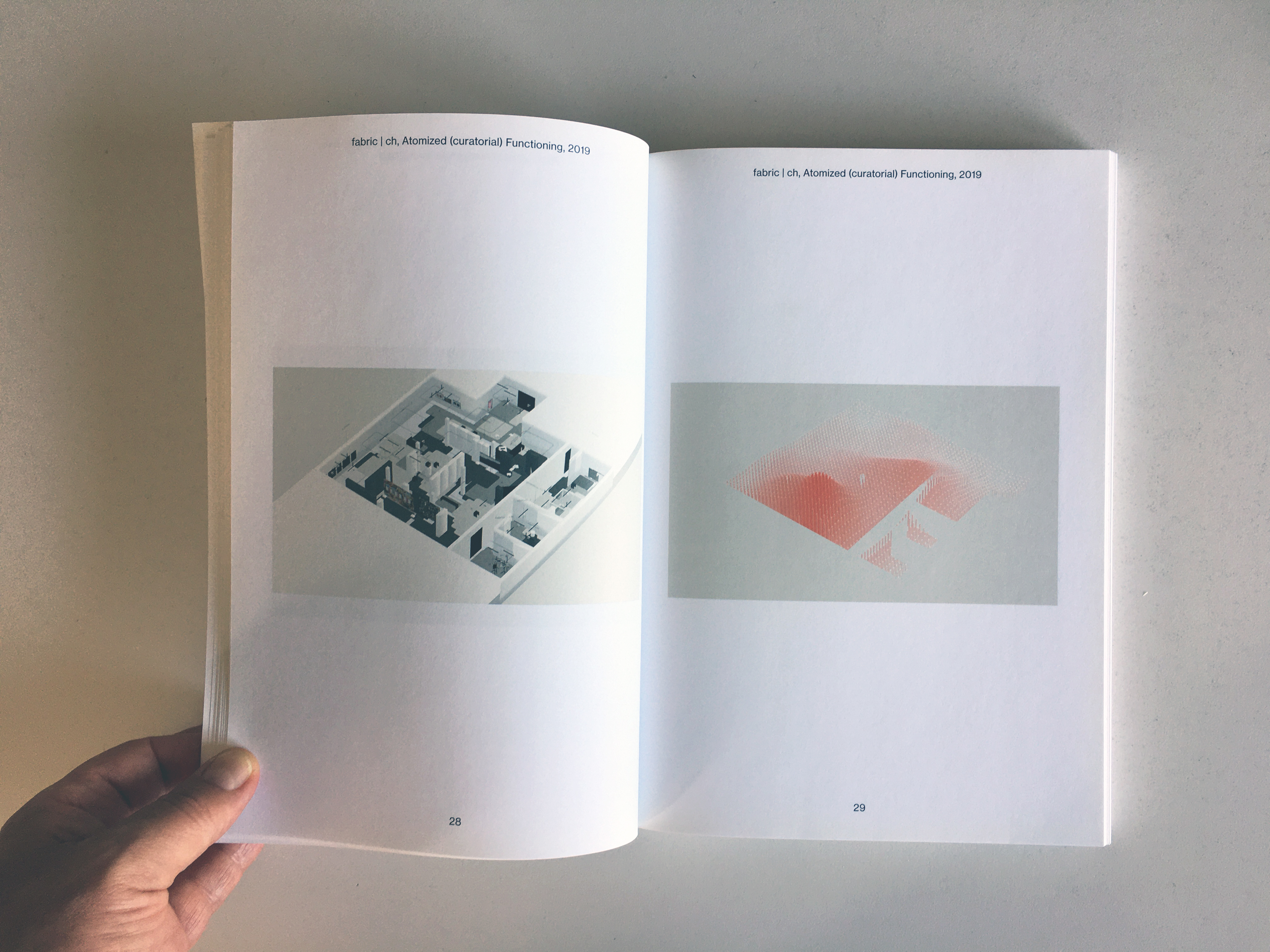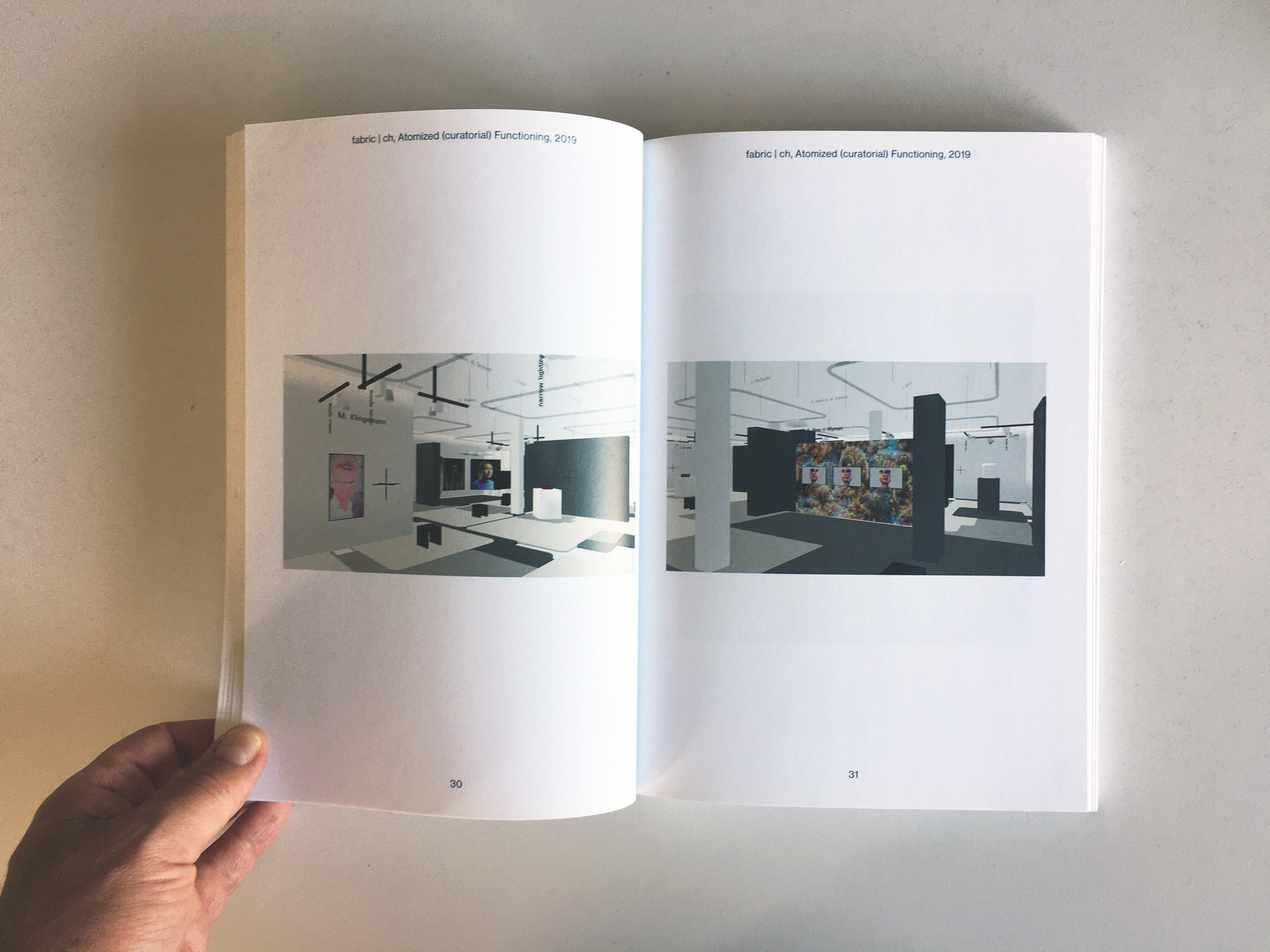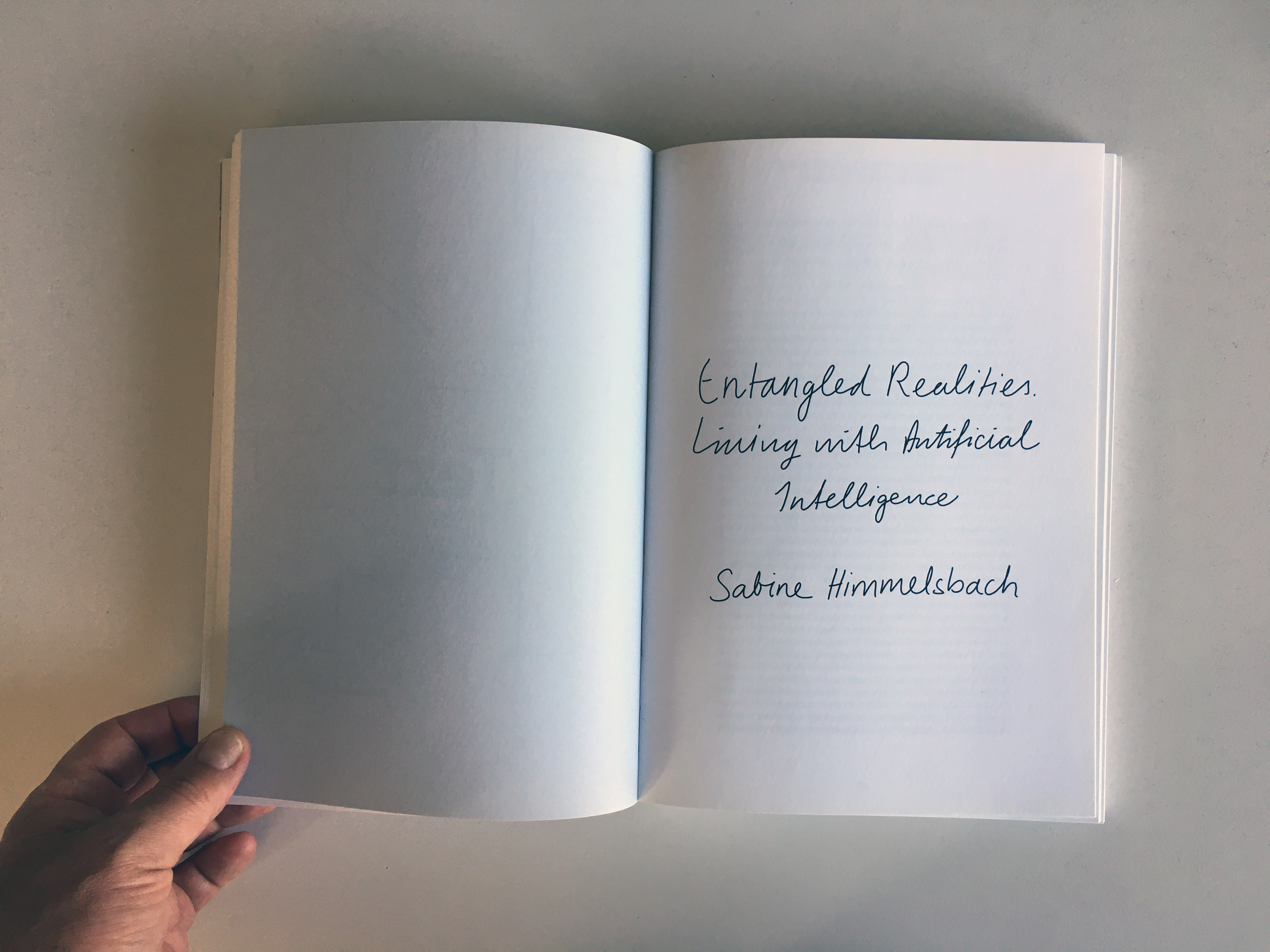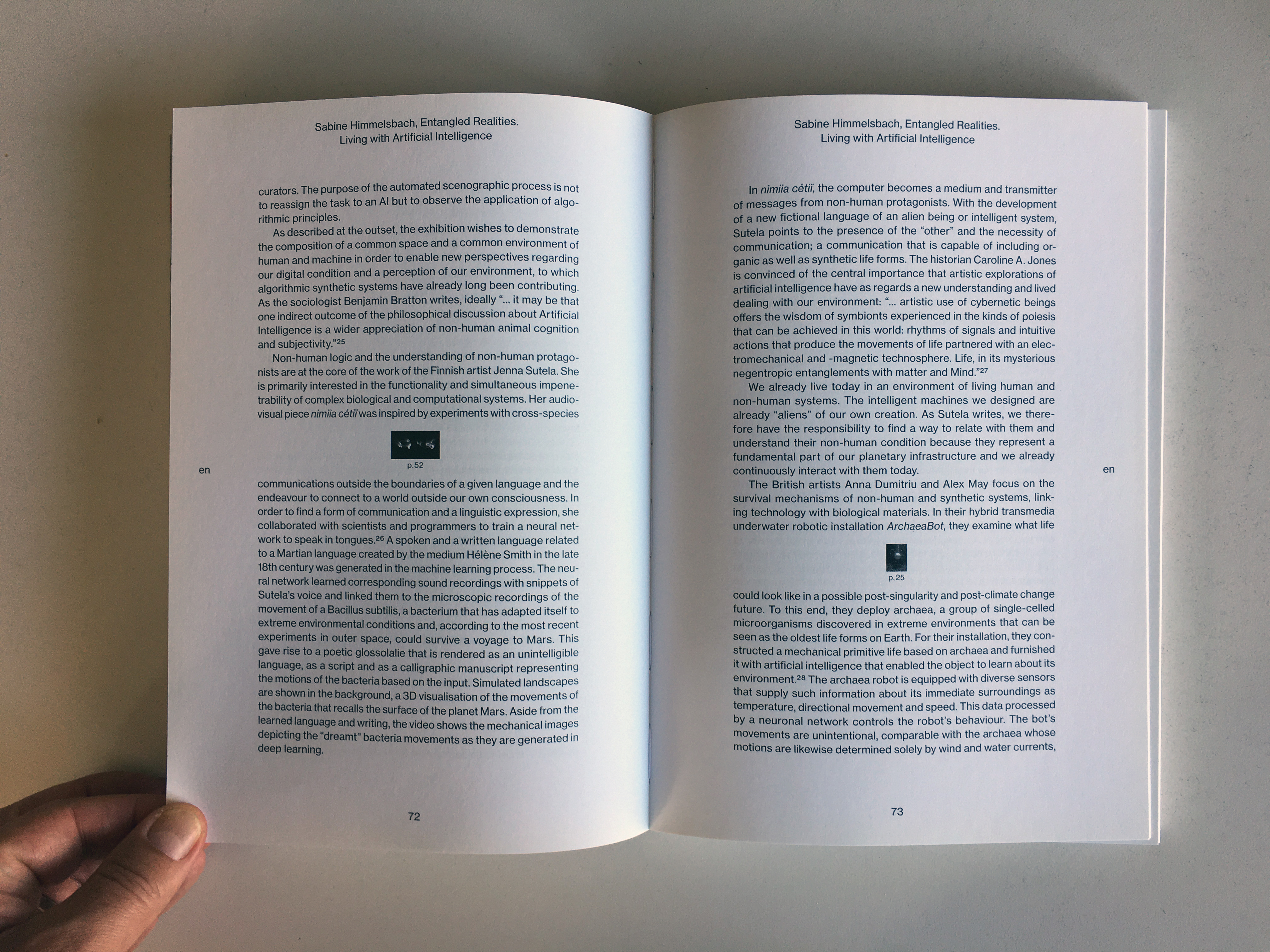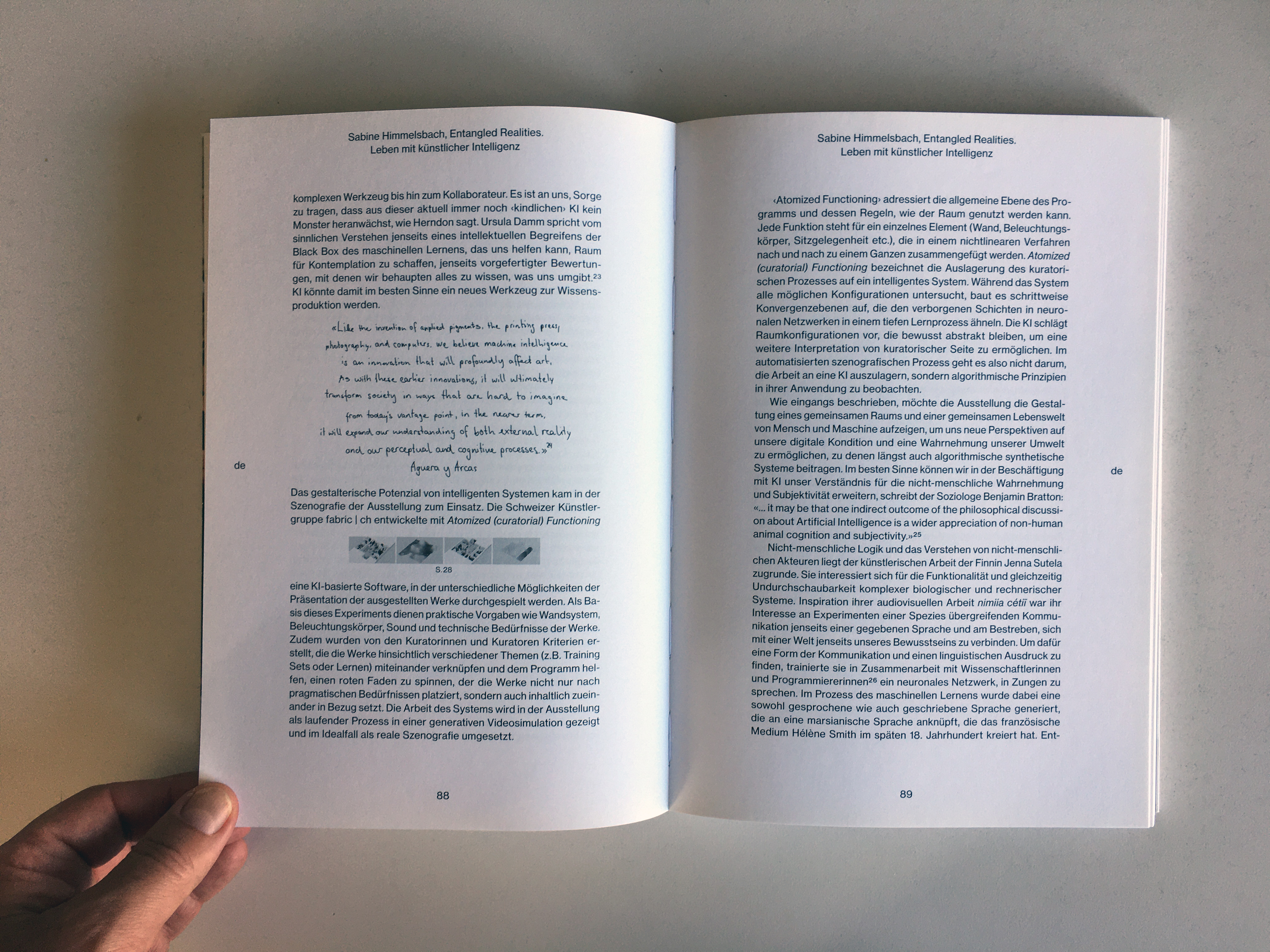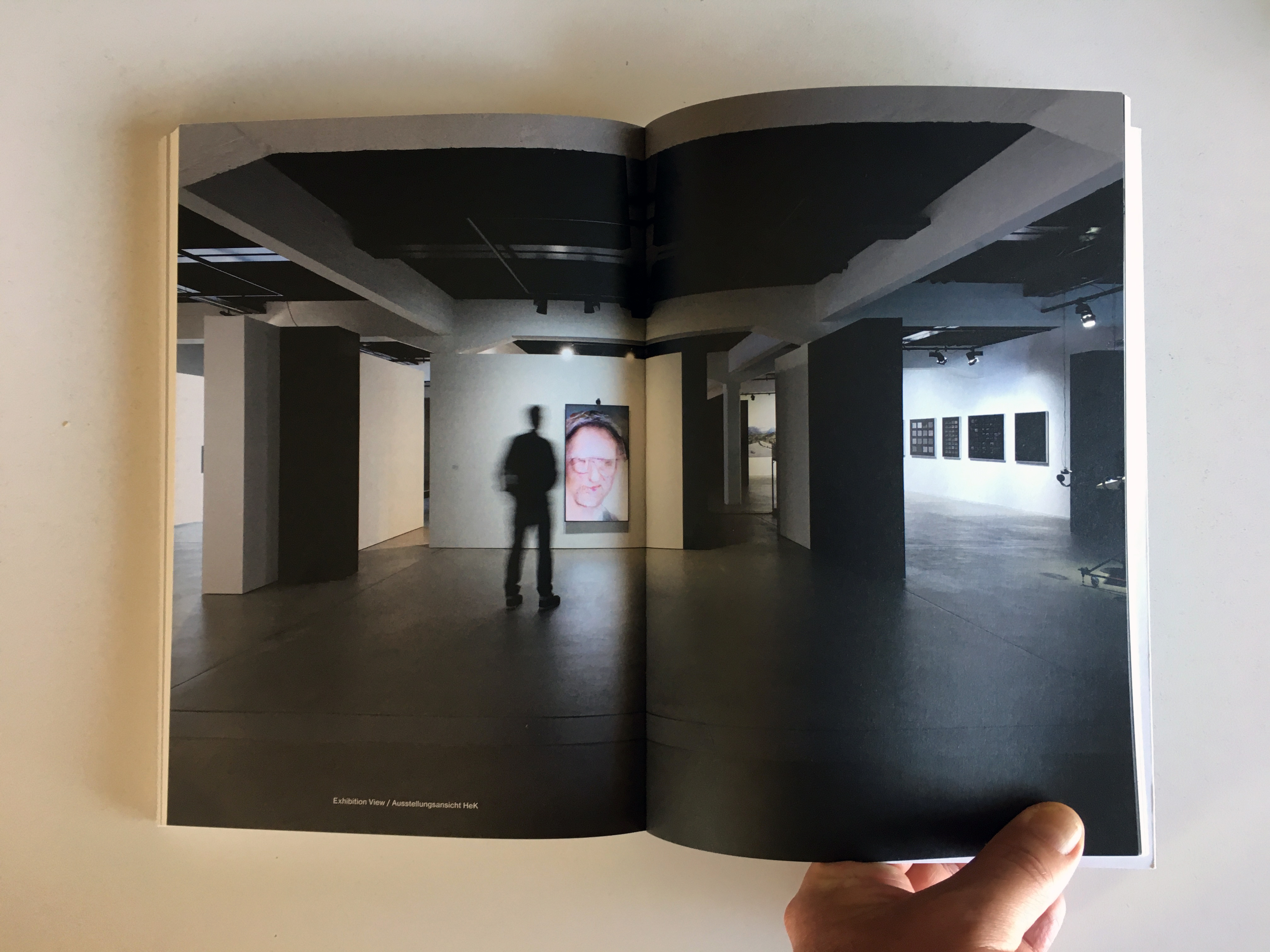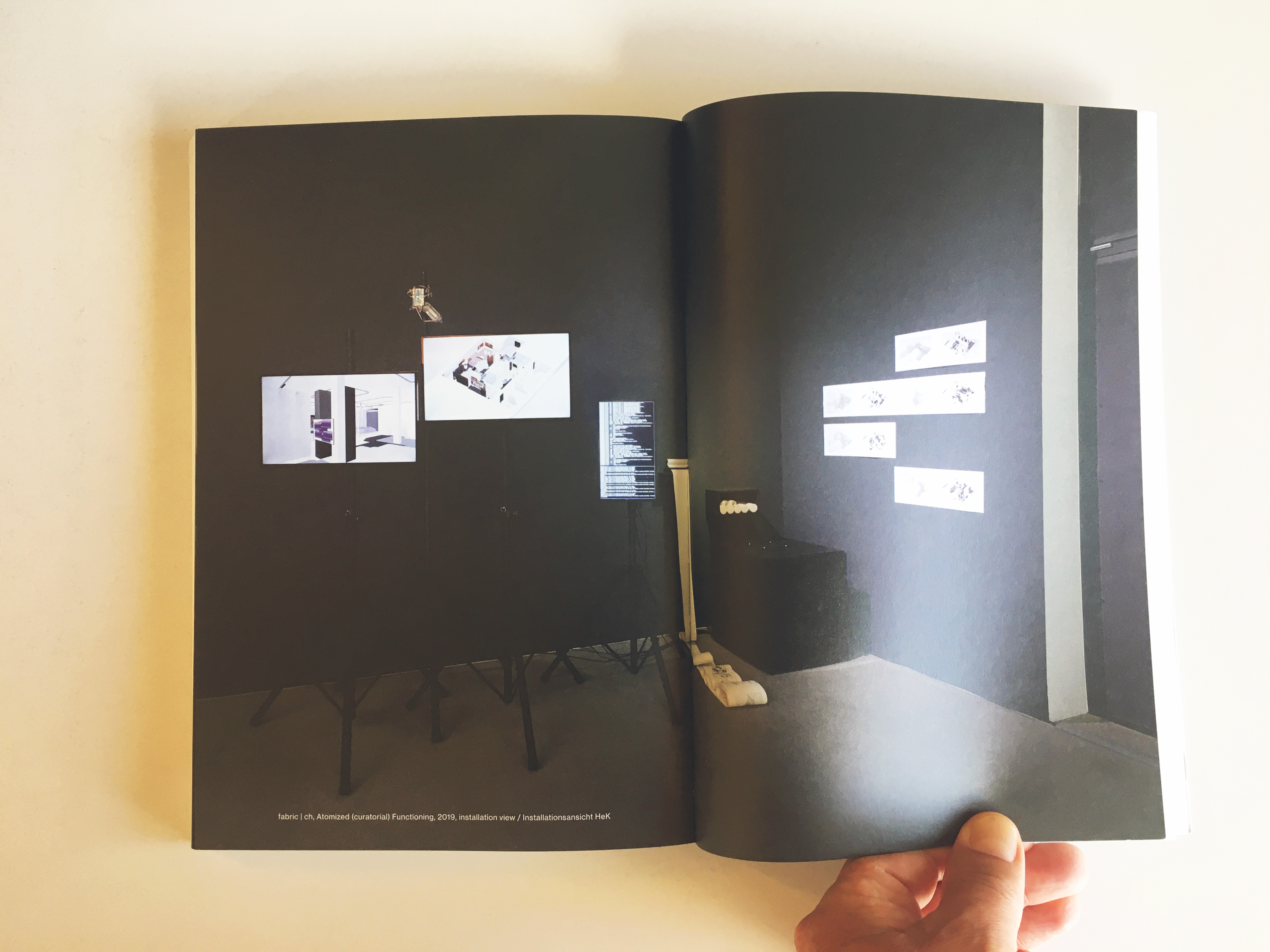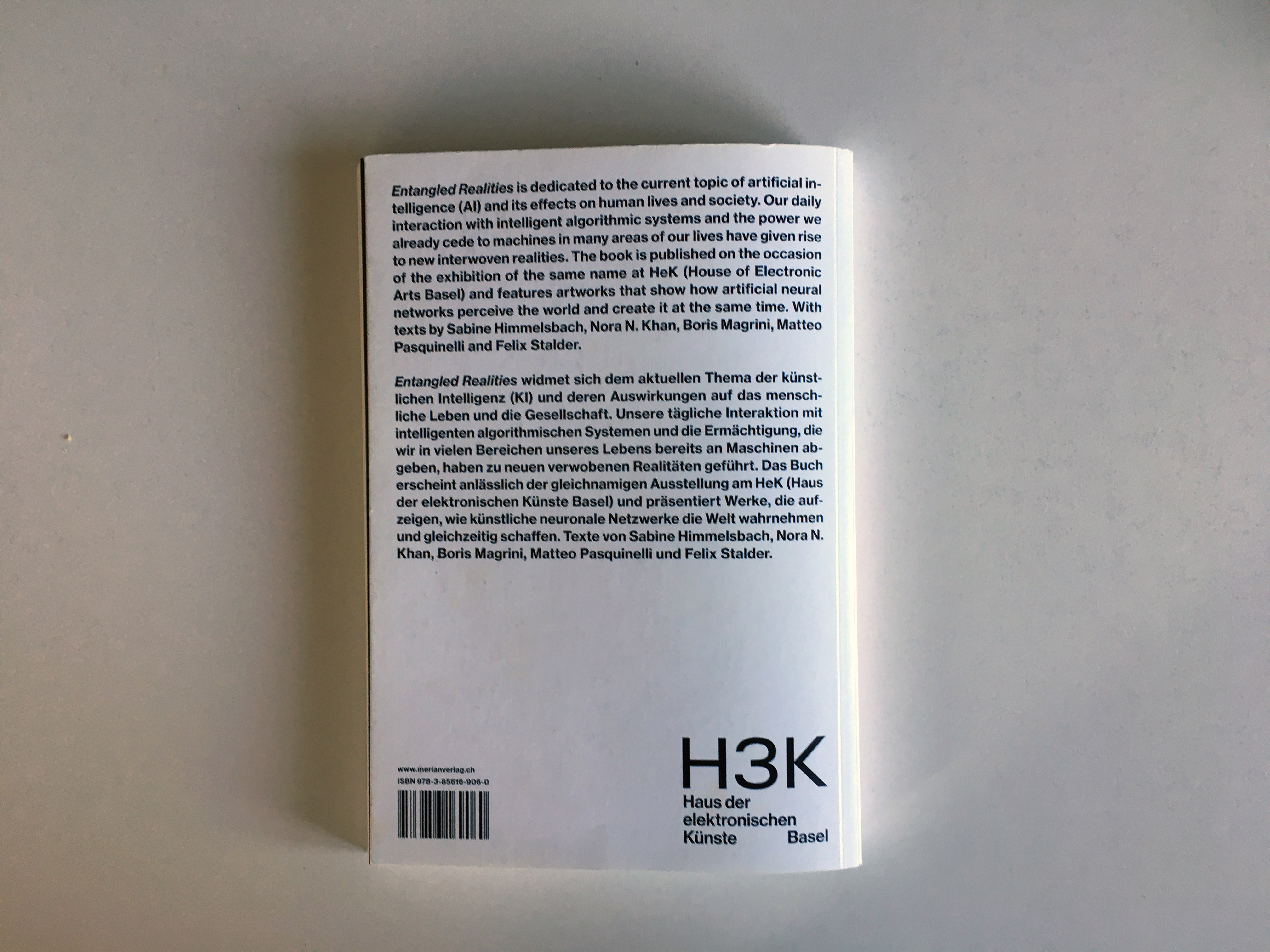Sticky Postings
All 242 fabric | rblg updated tags | #fabric|ch #wandering #reading
By fabric | ch
-----
As we continue to lack a decent search engine on this blog and as we don't use a "tag cloud" ... This post could help navigate through the updated content on | rblg (as of 09.2023), via all its tags!
FIND BELOW ALL THE TAGS THAT CAN BE USED TO NAVIGATE IN THE CONTENTS OF | RBLG BLOG:
(to be seen just below if you're navigating on the blog's html pages or here for rss readers)
--
Note that we had to hit the "pause" button on our reblogging activities a while ago (mainly because we ran out of time, but also because we received complaints from a major image stock company about some images that were displayed on | rblg, an activity that we felt was still "fair use" - we've never made any money or advertised on this site).
Nevertheless, we continue to publish from time to time information on the activities of fabric | ch, or content directly related to its work (documentation).
Tuesday, February 27. 2024
"Universal Machine": historical graphs on the relations and fluxes between art, architecture, design, and technology (19.. - 20..) | #art&sciences #history #graphs
Note (03.2024): The contents of the files (maps) have been updated as of 02.2024.
-
Note (07.2021): As part of my teaching at ECAL / University of Art and Design Lausanne (HES-SO), I've delved into the historical ties between art and science. This ongoing exploration focuses on the connection between creative processes in art, architecture, and design, and the information sciences, particularly the computer, also known as the "Universal Machine" as coined by A. Turing. This informs the title of the graphs below and this post.
Through my work at fabric | ch, and previously as an assistant at EPFL followed by a professorship at ECAL, to experience first hand some of these massive transformations in society and culture.
Thus, in my theory courses, I've aimed to create "maps" that aid in comprehending, visualizing, and elucidating the flux and timelines of interactions among individuals, artifacts, and disciplines. These maps, imperfect and constrained by size, are continuously evolving and open to interpretation beyond my own. I regularly update them as part of the process.
Yet, in the absence of a comprehensive written, visual, or sensitive history of these techno-cultural phenomena as a whole, these maps serve as valuable approximation tools for grasping the flows and exchanges that either unite or divide them. They offer a starting point for constructing personal knowledge and delving deeper into these subjects.
This is precisely why, despite their inherent fuzziness - or perhaps because of it - I choose to share them on this blog (fabric | rblg), in an informal manner. It's an invitation for other artists, designers, researchers, teachers, students, and so forth, to begin building upon them, to depict different flows, to develop pre-existing or subsequent ideas, or even more intriguingly, to diverge from them. If such advancements occur, I'm keen on featuring them on this platform. Feel free to reach out for suggestions, comments, or to share new developments.
...
It's worth mentioning that the maps are structured horizontally along a linear timeline, spanning from the late 18th century to the mid-21st century, predominantly focusing on the industrial period. Vertically, they are organized around disciplines, with the bottom representing engineering, the middle encompassing art and design, and the top relating to humanities, social events, or movements.
Certainly, one might question this linear timeline, echoing the sentiments of writer B. Latour. What about considering a spiral timeline, for instance? Such a representation would still depict both the past and the future, while also illustrating the historical proximities of topics, connecting past centuries and subjects with our contemporary context in a circular manner. However, for the time being, and while recognizing its limitations, I adhere to the simplicity of the linear approach.
Countless narratives can emerge as inherent properties of the graphs, underscoring that they are not their origins but rather products thereof.
...
The selection of topics (code, scores-instructions, countercultural, network-related, interaction, "post-...") currently aligns with the themes of my teaching but is subject to expansion, possibly toward an underlying layer revealing the material conditions that underpinned and facilitated the entire process.
In any case, this could serve as a fruitful starting point for some further readings or perhaps a new "Where's Waldo/Wally" kind of game!
Via fabric | ch
-----
By Patrick Keller
Rem.: By clicking on the thumbnails below you'll get access to HD versions.
"Universal Machine", main map (late 18th to mid 21st centuries):
Flows in the map > "Code":
Flows in the map > "Scores, Partitions, ...":
Flows in the map > "Countercultural, Subcultural, ...":
Flows in the map > "Network Related":
Flows in the map > "Interaction":
Flows in the map > "Post-Internet/Digital, "Post -..." , "Neo -...", ML/AI":
...
To be continued (& completed) ...
Monday, October 30. 2023
fabric | ch receives the award "Architecture & Landscape" from the Fondation vaudoise pour la culture | #architecture #experimental #digital #award
Note: this Saturday (04.11) fabric | ch will receive the "Architecture & Landscape" price from the Art Council of Canton de Vaud (CH).
It is a rare but much-apreciated recognition of our work by the region where we've been working all those years (and, at the same occasion, also one to show our faces)! We're still waiting for an invitation to exhibit fabric | ch's work somewhere in our hometown though 😉
So rejoice, and let's celebrate together during the following drinks reception!
Via @fvpc
-----
Monday, March 13. 2023
Atomized (re-)Staging short video documentation | #fabricch #digital #hybrid #exhibition
Note: a brief video documentation about one of fabric | ch's latest project – Atomized (Re)Staging – that was exhibited at ZKM during Matter. Non-Matter. Anti-Matter.
The exhibition was curated by Lívía Nolasco-Roszás and Felix Koberstein and took place ibn the context of the European research project Beyond Matter.
![]()
-----
Friday, March 10. 2023
Atomized (re-)Staging at ZKM, Instagram @zkmkarlsruhe (2023) | #fabricch #digital #exhibition #algorithmic #intelligence
Via
-----
Wednesday, November 30. 2022
Atomized (re-)Staging, new work by fabric | ch on @beyondmatter and @zkm | #exhibition #digital #autonomous
Via
-----
Friday, October 28. 2022
Art x Science Dialogues: Curation In The Context of Artificial Intelligence - fabric | ch & Aiiiii Art Center Shanghai | #AI #exhibition #architecture
Note:
fabric | ch had the pleasure to present our recent works at the invitation of Swissnex China, during an online panel along with Ms. Xi Li, curator and director of the Aiiiii Art Center in Shanghai.
This was in particular the occasion to introduce Platform of Future-Past, a new installation and environmental device realized for the exhibition at How Art Center (Shanghai)
The panel was moderated by Cissy Sun, Head of Art-Science, Swissnex in China.
Via Swissnex China
-----

Art x Science Dialogues: Curation In The Context of Artificial Intelligence
Join the upcoming Art x Science Dialogue, exploring the topic of curation and artificial intelligence with Mr. Patrick Keller, Architect and Co-founder of fabric | ch and Ms. Xi Li, Curator and Director of Aiiiii Art Center.
---
When
Where
While the question of whether AI will take over the art world has been raised repeatedly, there seems to be a consensus in the art world that AI is a creative tool and that we should make better use of it. And it is the same with curation. Using algorithms in content curation and spatial design, implementing AI systems in museums, curating on generative artworks and etc. are the new issues facing today’s curators.
In the upcoming edition of Art x Science Dialogue, we’ll invite Mr. Patrick Keller, Architect and Co-founder of fabric | ch, and Ms. Xi Li, Curator and Director of Aiiiii Art Center, to join the conversation on the topic of curation and artificial intelligence.
Patrick Keller will present the works from their Collective – fabric | ch, featuring Atomized (curatorial) Functioning. It is an architectural project based on automated algorithmic principles, to which a machine learning layer can be added as required. It is a software piece that endlessly creates and saves new spatial configurations for a given situation and converges towards a “solution”, in real-time 3d and according to dynamic data and constraints. While Xi Li will present her research on AI art curation and her perspectives and practices in curating the exhibitions at Aiiiii Art Center. It is a brand new artificial intelligence art institution based in Shanghai, aiming to offer insight into the many challenges, practices, and creative modes of artificial intelligence-based art.
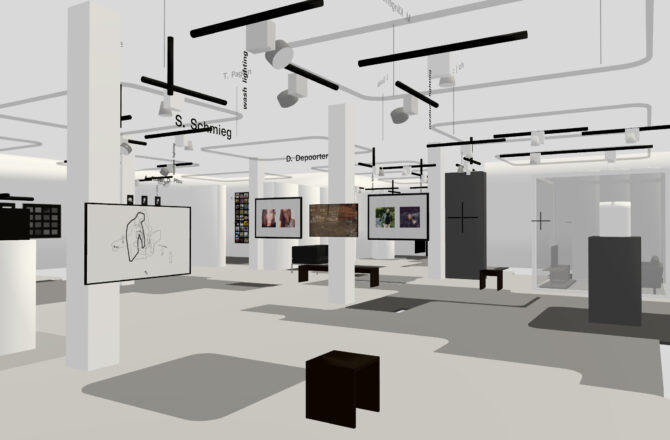
Atomized (curatorial) Functioning, by fabric | ch
---
PROGRAM
16:00 – 16:05 Opening Remarks
Cissy Sun, Head of Art-Science, Swissnex in China
16:05 – 16:25 Presentation
Patrick Keller, Architect, Co-founder, fabric | ch
16:25 – 16:45 Presentation
Xi Li, Curator, Director, Aiiiii Art Center
16:45 – 17:00 Discussion and Q&A
SPEAKERS
---
fabric | ch – studio for architecture, interaction & research
Combining experimentation, exhibition, and production, fabric | ch formulates new architectural proposals and produces singular livable spaces that bind localized and distributed landscapes, algorithmic behaviors, atmospheres, and technologies.
Since the foundation of the studio, the architects and scientists of fabric | ch have investigated the field of contemporary space in its interaction with technologies. From network-related environments that blend physical and digital properties to algorithmic recombination of locations, temporalities, and dimensions based on the objective sensing of their environmental data, it is the nature of our relationship to the environment and to contemporary space that is rephrased.
The work of fabric | ch deals with issues related to the mediation of our relationship to place and distance, to automated climatic, informational, and energetic exchanges, to mobility and post-globalization, all inscribed in a perspective of creolization, spatial interbreeding, new materialism, and sustainability.
fabric | ch is currently composed of Christian Babski, Stéphane Carion, Christophe Guignard and Patrick Keller (cofounders of the collective), Keumok Kim and Michaël Chablais.
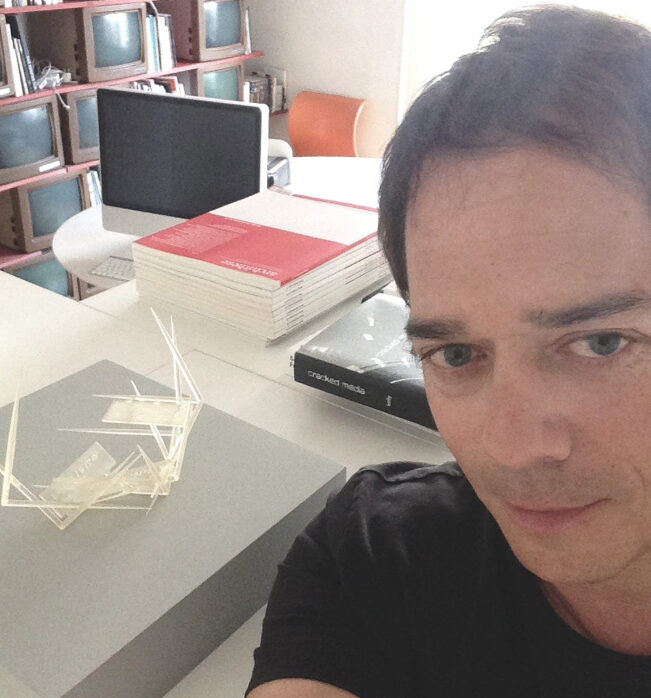
Patrick Keller is an architect and founding member of the collective fabric | ch, composed of architects, artists, and engineers, based in Lausanne, Switzerland.
In this context, he has contributed to the creation, development, and exhibition of numerous experimental works dealing with the intersection of architecture, networks, algorithms, and data, along with livable environments.
---
Aiiiii Art Center
Aiiiii Art Center (Est. 2021) is an artificial intelligence art institution based in Shanghai. The organization seeks to support, promote, as well as incubate both international and domestic artists and projects related to intelligent algorithms. Aiiiii Art Center is committed to becoming a pioneer of artificial intelligence through the discovery of exciting possibilities afforded by the intersections of creativity and technology.
Aiiiii Art Center aims to offer insight into the many challenges, practices, and creative modes of artificial intelligence-based art. Such aims will be achieved through academic conferences and published research efforts conducted either independently or in collaboration with domestic and international institutions and organizations. This organization will also actively promote and showcase the exploratory uses of artificial intelligence-based art in practice.
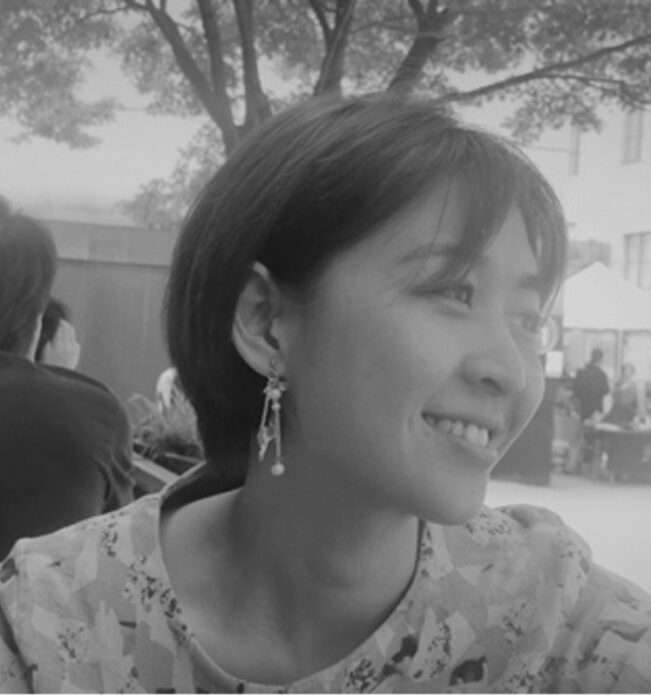
Xi Li, curator, director of Aiiiii Art Center. Graduated from Central Saint Martins MA in Narrative Environments and Central Academy of Fine Arts with a BA in Art Management.
Programs: Book of Sand: The Inaugural Exhibition of Aiiiii Art Center (2021); aai International Conference on AI Art (2021, 2022); Ritual of Signs and Metamorphosis (2018); Olafur Eliasson: The Unspeakable Openness of Things (2017);Captive of Love: Danwen Xing (2017); Over Time: The Poetic Image of the Urbanscape (2016).
---
ART X SCIENCE DIALOGUES
Art x Science Dialogues is a new webinar series initiated by Swissnex in China in 2020. The webinar series not only presents artistic projects where scientists and research engineers are deeply involved but also looks into new interdisciplinary initiatives and trends. Through the dialogues between artists and scientists, we try to stimulate the exchange of ideas between the two different worlds and explore opportunities for collaboration.
Wednesday, January 26. 2022
Platform of Future-Past (2022) at HOW Art Museum in Shanghai | #data #monitering #installation
Note:
The exhibition Beneath the Skin, Between the Machines just opened at HOW Art Museum (Hao Art Gallery) and fabric | ch was keen to be invited to create a large installation for the show, also intented to be used during a symposium that will be entirely part of the exhibition (panels and talks as part of the installation therefore). The exhibition will be open between January 15 - April 24 2022 in Shanghai.
Along with a selection of chinese and international artists, curator Liaoliao Fu asked us to develop a proposal based on a former architectural device, Public Platform of Future-Past, which in itself was inspired by an older installation of ours... Heterochrony.
This new work, entitled Platform of Future-Past, deals with the temporal oddity that can be produced and induced by the recording, accumulation and storage of monitoring data, which contributes to leaving partial traces of "reality", functioning as spectres of the past.
We are proud to present this work along artists such as Hito Steyerl, Geumhyung Jeong, Lu Yang, Jon Rafman, Forensic Architecture, Lynn Hershman Leeson and Harun Farocki.
...
Last but not least and somehow a "sign of the times", this is the first exhibition in which we are participating and whose main financial backers are a blockchain and crypto-finance company, as well as a NFT platform. Both based in China.
More information about the symposium will be published.
Via Pro Helvetia
-----

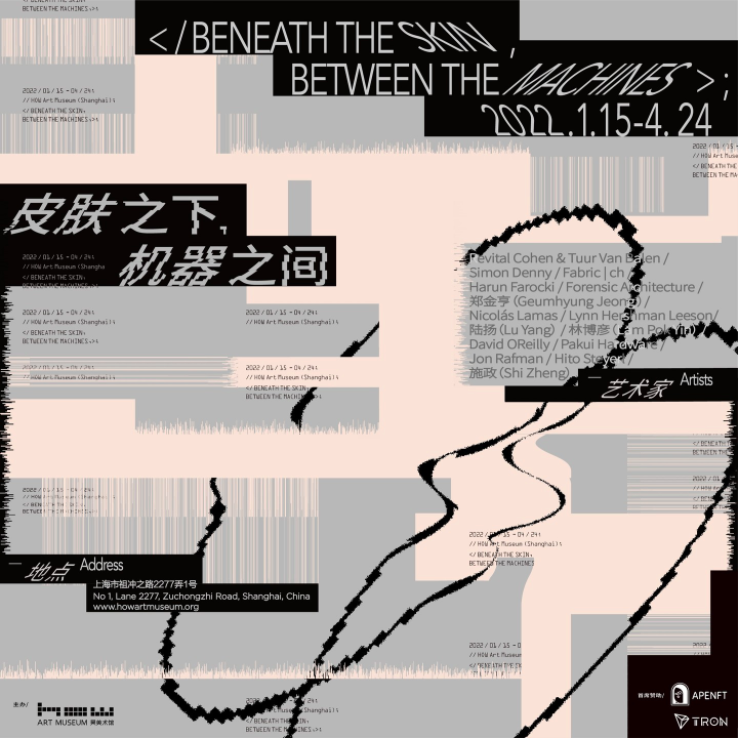
-----
Curatorial Statement
By Fu Liaoliao and the curatorial team
"Man is only man at the surface. Remove the skin, dissect, and immediately you come to machinery.” When Paul Valéry wrote this down, he might not foresee that human beings – a biological organism – would indeed be incorporated into machinery at such a profound level in a highly informationized and computerized time and space. In a sense, it is just as what Marx predicted: a conscious connection of machine[1]. Today, machine is no longer confined to any material form; instead, it presents itself in the forms of data, coding and algorithm – virtually everything that is “operable”, “calculable” and “thinkable”. Ever since the idea of cyborg emerges, the man-machine relation has always been intertwined with our imagination, vision and fear of the past, present and future.
In a sense, machine represents a projection of human beings. We human beings transfer ideas of slavery and freedom to other beings, namely a machine that could replace human beings as technical entities or tools. Opposite (and similar, in a sense,) to the “embodiment” of machine, organic beings such as human beings are hurrying to move towards “disembodiment”. Everything pertinent to our body and behavior can be captured and calculated as data. In the meantime, the social system that human beings have created never stops absorbing new technologies. During the process of trial and error, the difference and fortuity accompanying the “new” are taken in and internalized by the system. “Every accident, every impulse, every error is productive (of the social system),”[2] and hence is predictable and calculable. Within such a system, differences tend to be obfuscated and erased, but meanwhile due to highly professional complexities embedded in different disciplines/fields, genuine interdisciplinary communication is becoming increasingly difficult, if not impossible.
As a result, technologies today are highly centralized, homogenized, sophisticated and commonized. They penetrate deeply into our skin, but beyond knowing, sensing and thinking. On the one hand, the exhibition probes into the reconfiguration of man by technologies through what’s “beneath the skin”; and on the other, encourages people to rethink the position and situation we’re in under this context through what’s “between the machines”. As an art institute located at Shanghai Zhangjiang Hi-Tech Industrial Development Zone, one of the most important hi-tech parks in China, HOW Art Museum intends to carve out an open rather than enclosed field through the exhibition, inviting the public to immerse themselves and ponder upon the questions such as “How people touch machines?”, “What the machines think of us?” and “Where to position art and its practice in the face of the overwhelming presence of technology and the intricate technological reality?”
Departing from these issues, the exhibition presents a selection of recent works of Revital Cohen & Tuur Van Balen, Simon Denny, Harun Farocki, Nicolás Lamas, Lynn Hershman Leeson, Lu Yang, Lam Pok Yin, David OReilly, Pakui Hardware, Jon Rafman, Hito Steyerl, Shi Zheng and Geumhyung Jeong. In the meantime, it intends to set up a “panel installation”, specially created by fabric | ch for this exhibition, trying to offer a space and occasion for decentralized observation and participation in the above discussions. Conversations and actions are to be activated as well as captured, observed and archived at the same time.
[1] Karl Marx, “Fragment on Machines”, Foundations of a Critique of Political Economy
[2] Niklas Luhmann, Social Systems
-----
Schedule
Duration: January 15-April 24, 2022
Artists: Revital Cohen & Tuur Van Balen, Simon Denny, fabric | ch, Harun Farocki, Geumhyung Jeong, Nicolás Lamas, Lynn Hershman Leeson, Lu Yang, Lam Pok Yin, David OReilly, Pakui Hardware, Jon Rafman, Hito Steyerl, Shi Zheng
Curator: Fu Liaoliao
Organizer: HOW Art Museum, Shanghai
Lead Sponsor: APENFT Foundation
Swiss participation is supported by Pro Helvetia Shanghai, Swiss Arts Council.
(Swiss speakers and performers appearing in the educational events will be updated soon.)
-----
Work by fabric | ch
HOW Art Museum has invited Lausanne-based artist group fabric | ch to set up a “panel installation” based on their former project “Public Platform of Future Past” and adapted to the museum space, fostering insightful communication among practitioners from different fields and the audiences.
“Platform of Future-Past” is a temporary environmental device that consists in a twenty meters long walkway, or rather an observation deck, almost archaeological: a platform that overlooks an exhibition space and that, paradoxically, directly links its entrance to its exit. It thus offers the possibility of crossing this space without really entering it and of becoming its observer, as from archaeological observation decks. The platform opens- up contrasting atmospheres and offers affordances or potential uses on the ground.
The peculiarity of the work consists thus in the fact that it generates a dual perception and a potential temporal disruption, which leads to the title of the work, Platform of Future-Past: if the present time of the exhibition space and its visitors is, in fact, the “archeology” to be observed from the platform, and hence a potential “past,” then the present time of the walkway could be understood as a possible “future” viewed from the ground…
“Platform of Future-Past” is equipped in three zones with environmental monitoring devices. The sensors record as much data as possible over time, generated by the continuously changing conditions, presences and uses in the exhibition space. The data is then stored on Platform Future-Past’s servers and replayed in a loop on its computers. It is a “recorded moment”, “frozen” on the data servers, that could potentially replay itself forever or is waiting for someone to reactivate it. A “data center” on the deck, with its set of interfaces and visualizations screens, lets the visitors-observers follow the ongoing process of recording.
The work could be seen as an architectural proposal built on the idea of massive data production from our environment. Every second, our world produces massive amounts of data, stored “forever” in remote data centers, like old gas bubbles trapped in millennial ice.
As such, the project is attempting to introduce doubt about its true nature: would it be possible, in fact, that what is observed from the platform is already a present recorded from the past? A phantom situation? A present regenerated from the data recorded during a scientific experiment that was left abandoned? Or perhaps replayed by the machine itself ? Could it already, in fact, be running on a loop for years?
Platform of Future-Past, Scaffolding, projection screens, sensors, data storage, data flows, plywood panels, textile partitions
-----
Platform of Future-Past (2022)



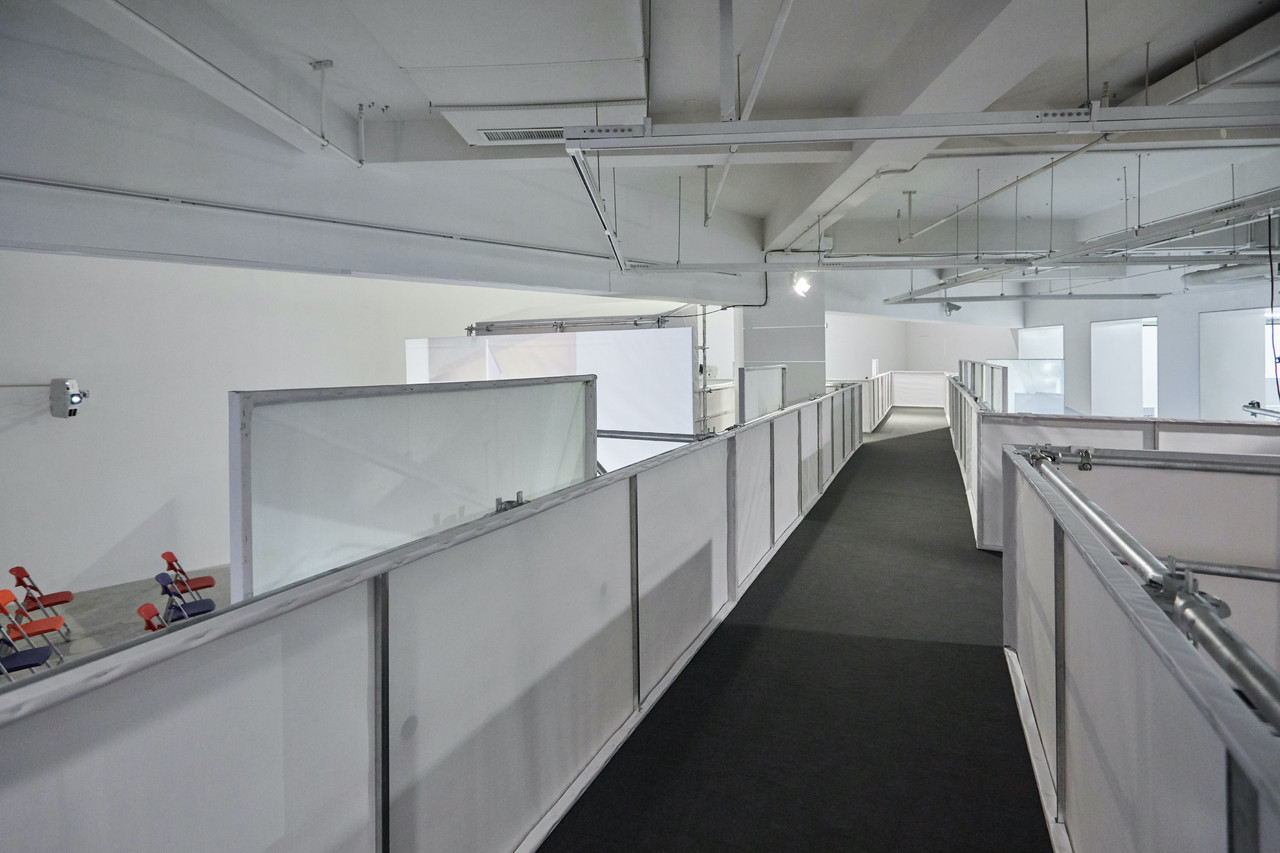
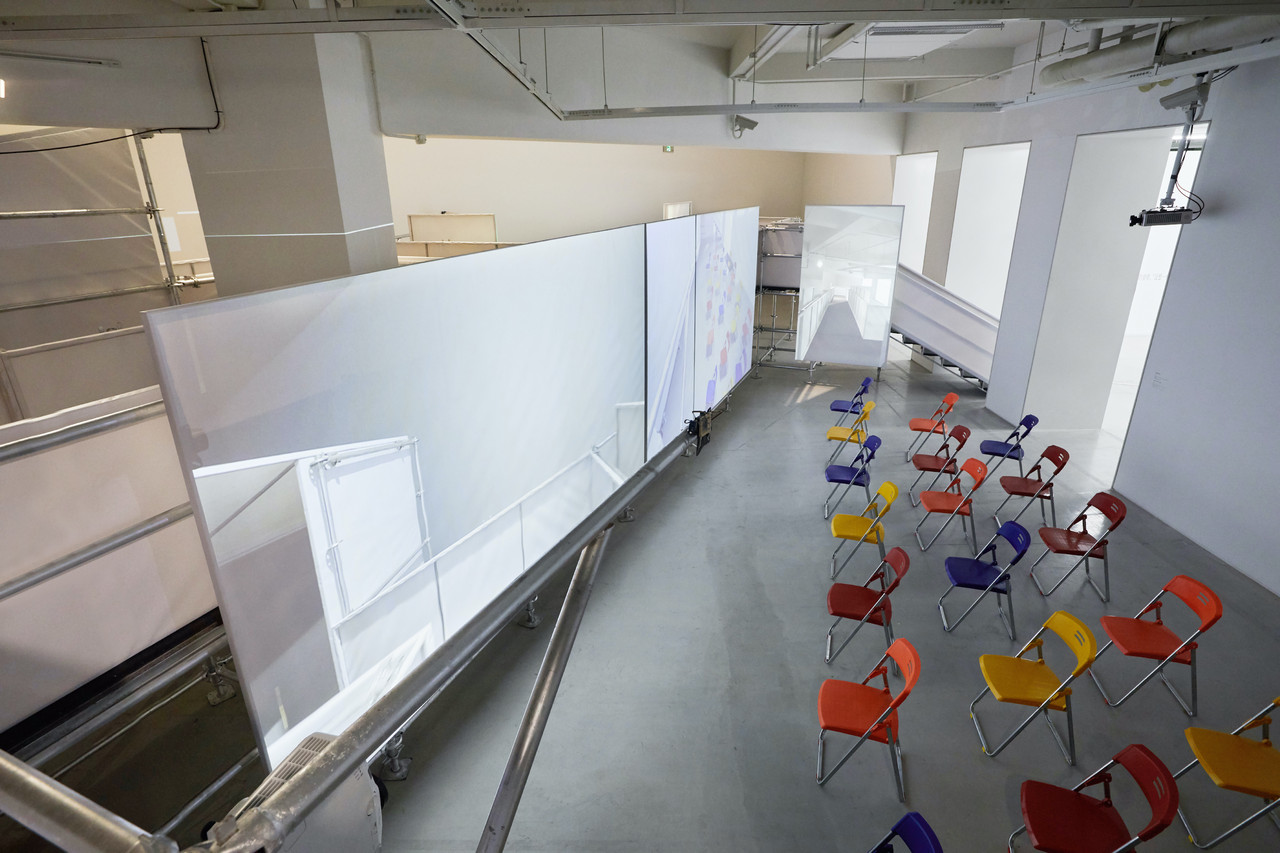


-----
Beneath the Skin, Between the Machines (exhibition, 01.22 - 04.22)
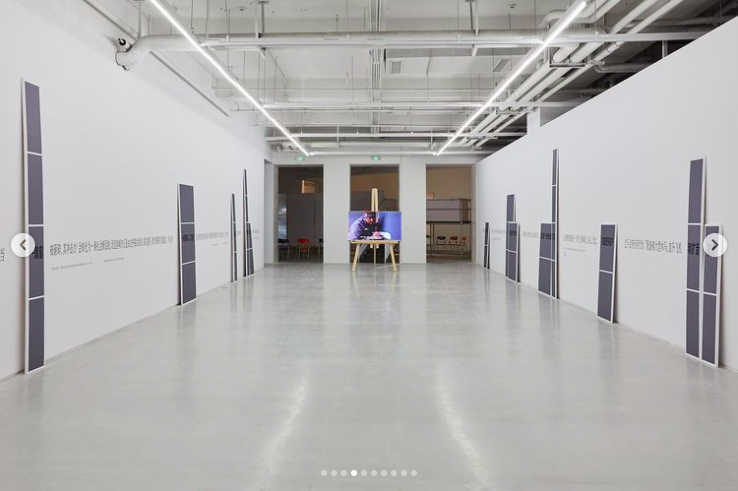
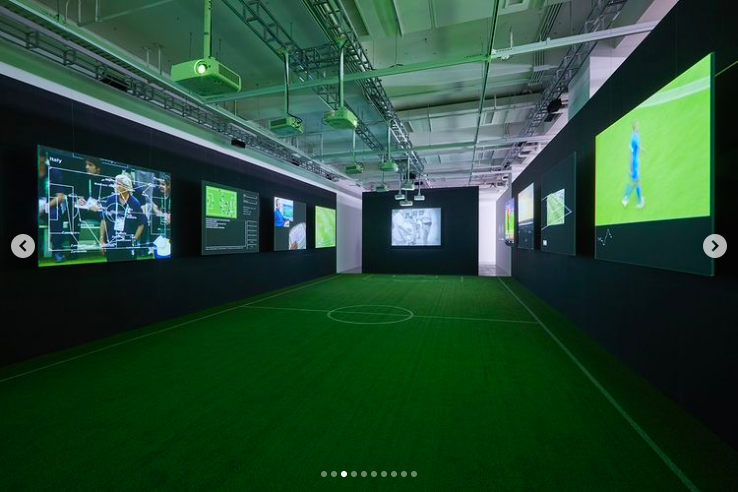

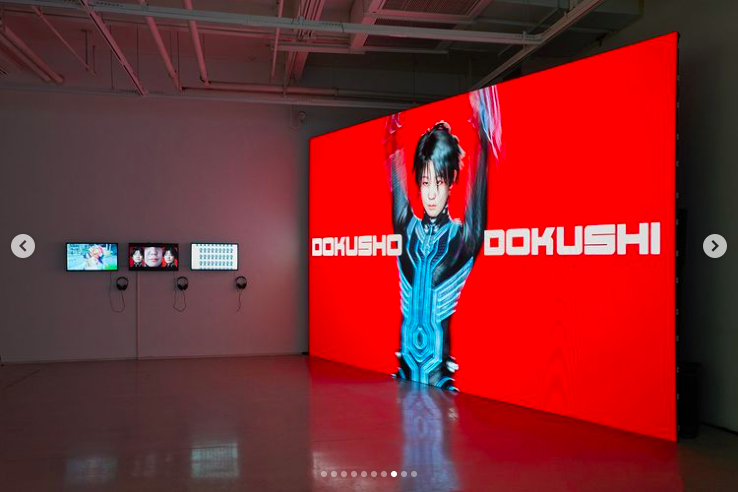
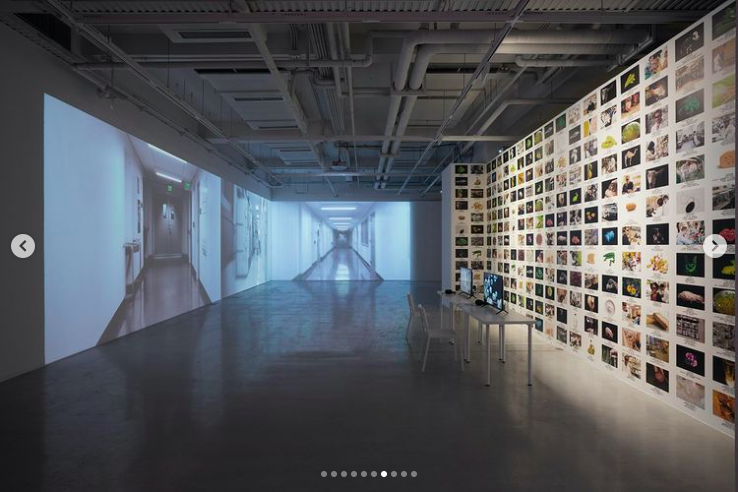
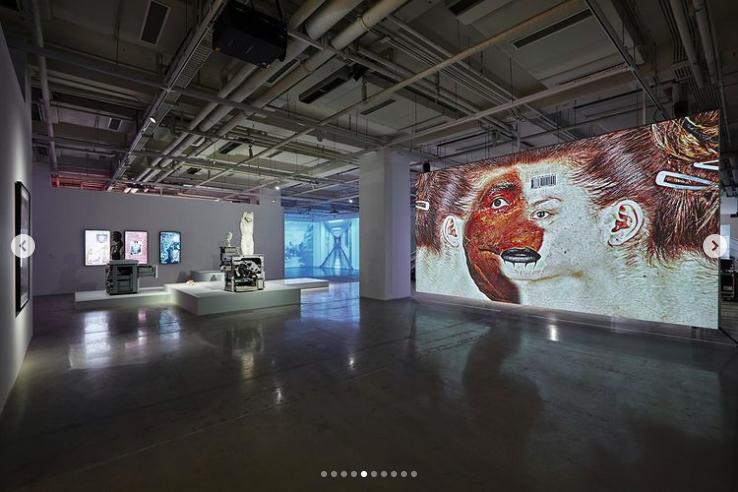

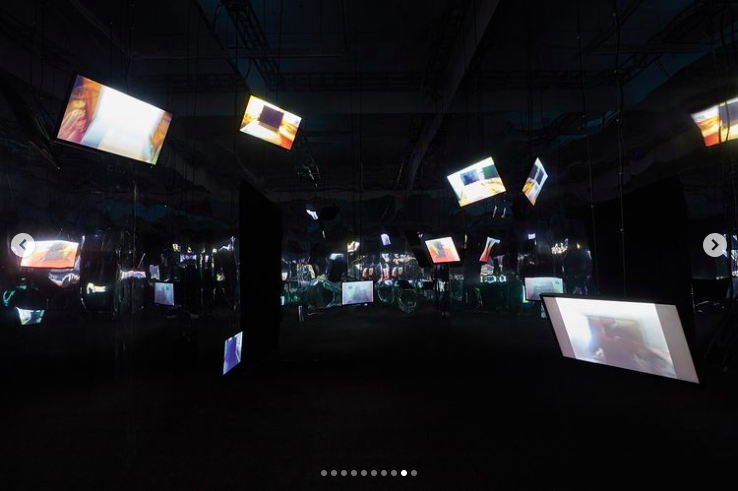

-----
Platform of Future-Past was realized with the support of Pro Helvetia.
Tuesday, October 05. 2021
"Automation algorithmiques et créolisations", revue Espace (Montréal, 2020) | #publications #AI #algorithms #automated
Note: an interview about the implications of AI in art and the work of fabric | ch in particular, between Nathalie Bachand (writer & independant curator), Christophe Guignard and myself (both fabric | ch). The exchange happened in the context of a publication in the art magazine Espace, it was fruitful and we had the opportunity to develop on recent projects, like the "Atomized" serie of architectural works that will continue to evolve, as well as our monographic exhibition at Kunshalle Éphémère, entitled Environmental Devices (1997 - 2017).
-----
By fabric | ch
Tuesday, August 31. 2021
Entangled Realities, HeK exhibition catalogue (eds. S. Himmelsbach & B. Magrini), C. Merian Verlag (Basel, 2021) | #AI #art #environments
Note: this publication was released at the occasion of the exhibition Entangled Realities - Living with Artificial Intelligence, curated by Sabine Himmelsbach & Boris Magrini at Haus der elektronischen Künste, in Basel.
The project Atomized (curatorial) Functioning (pdf), part of the Atomized (*) Functioning serie, was presented, used and debatedi n this context.
-----
By Patrick Keller
fabric | rblg
This blog is the survey website of fabric | ch - studio for architecture, interaction and research.
We curate and reblog articles, researches, writings, exhibitions and projects that we notice and find interesting during our everyday practice and readings.
Most articles concern the intertwined fields of architecture, territory, art, interaction design, thinking and science. From time to time, we also publish documentation about our own work and research, immersed among these related resources and inspirations.
This website is used by fabric | ch as archive, references and resources. It is shared with all those interested in the same topics as we are, in the hope that they will also find valuable references and content in it.
Quicksearch
Categories
Calendar
|
|
April '24 | |||||
| Mon | Tue | Wed | Thu | Fri | Sat | Sun |
| 1 | 2 | 3 | 4 | 5 | 6 | 7 |
| 8 | 9 | 10 | 11 | 12 | 13 | 14 |
| 15 | 16 | 17 | 18 | 19 | 20 | 21 |
| 22 | 23 | 24 | 25 | 26 | 27 | 28 |
| 29 | 30 | |||||

